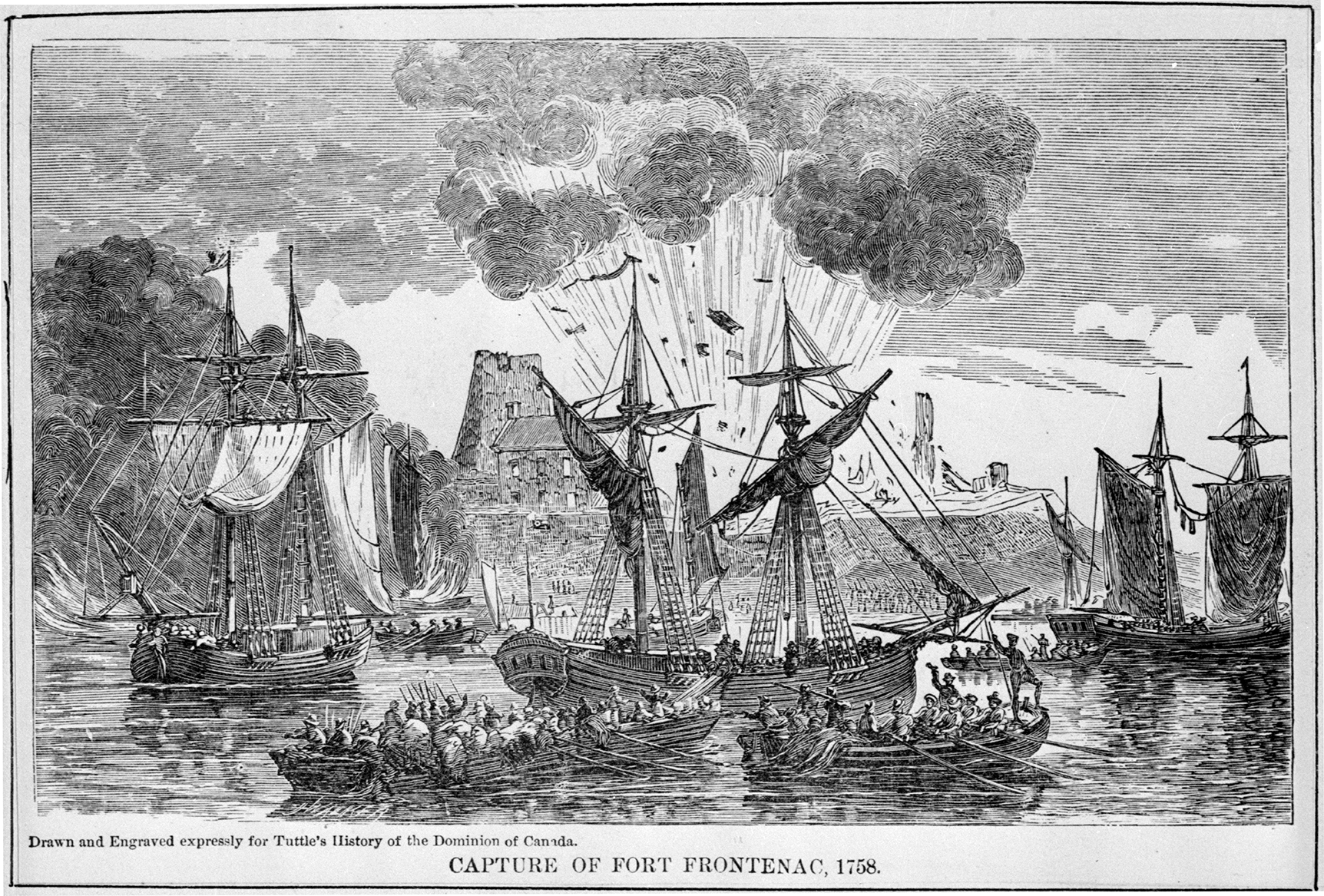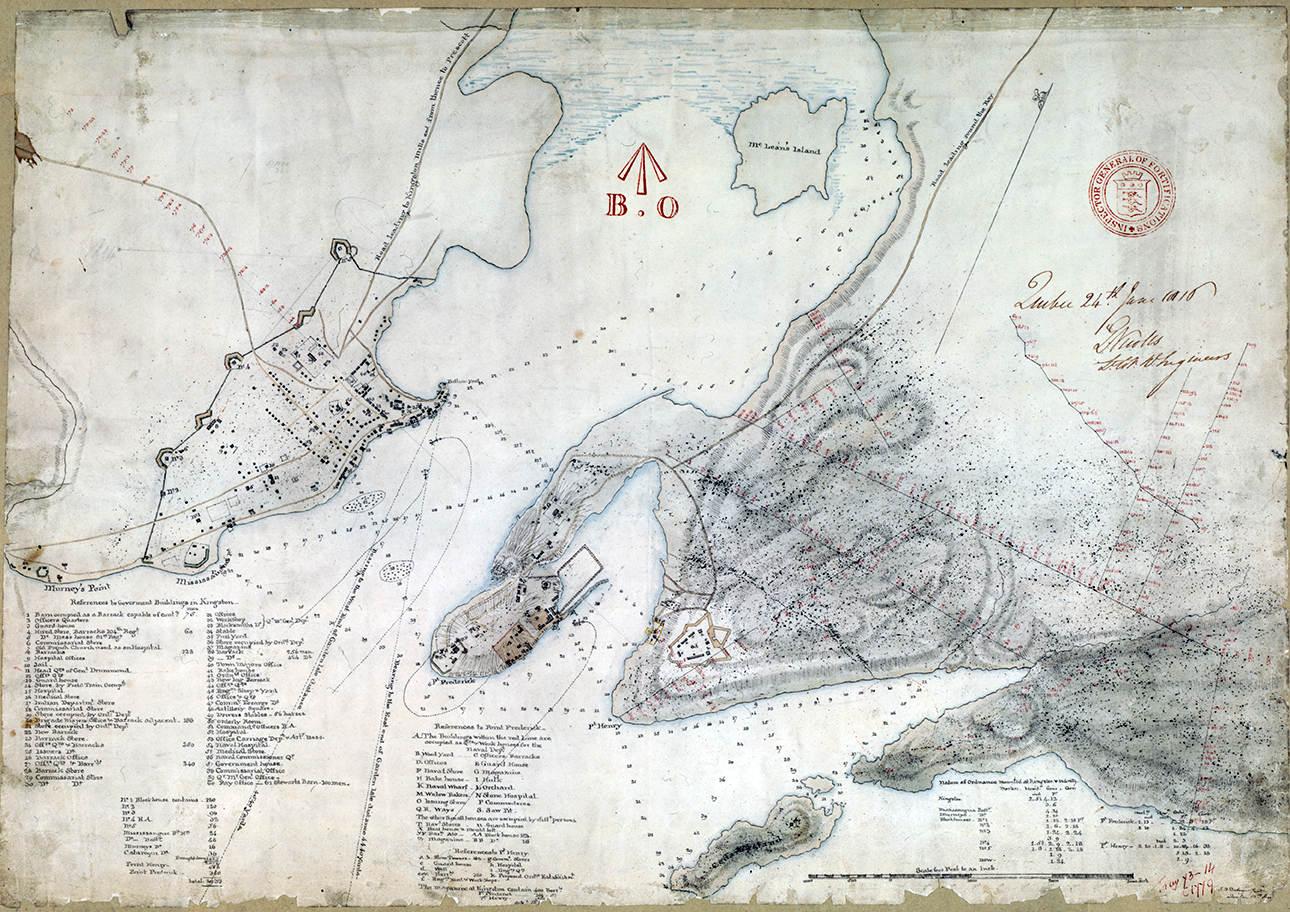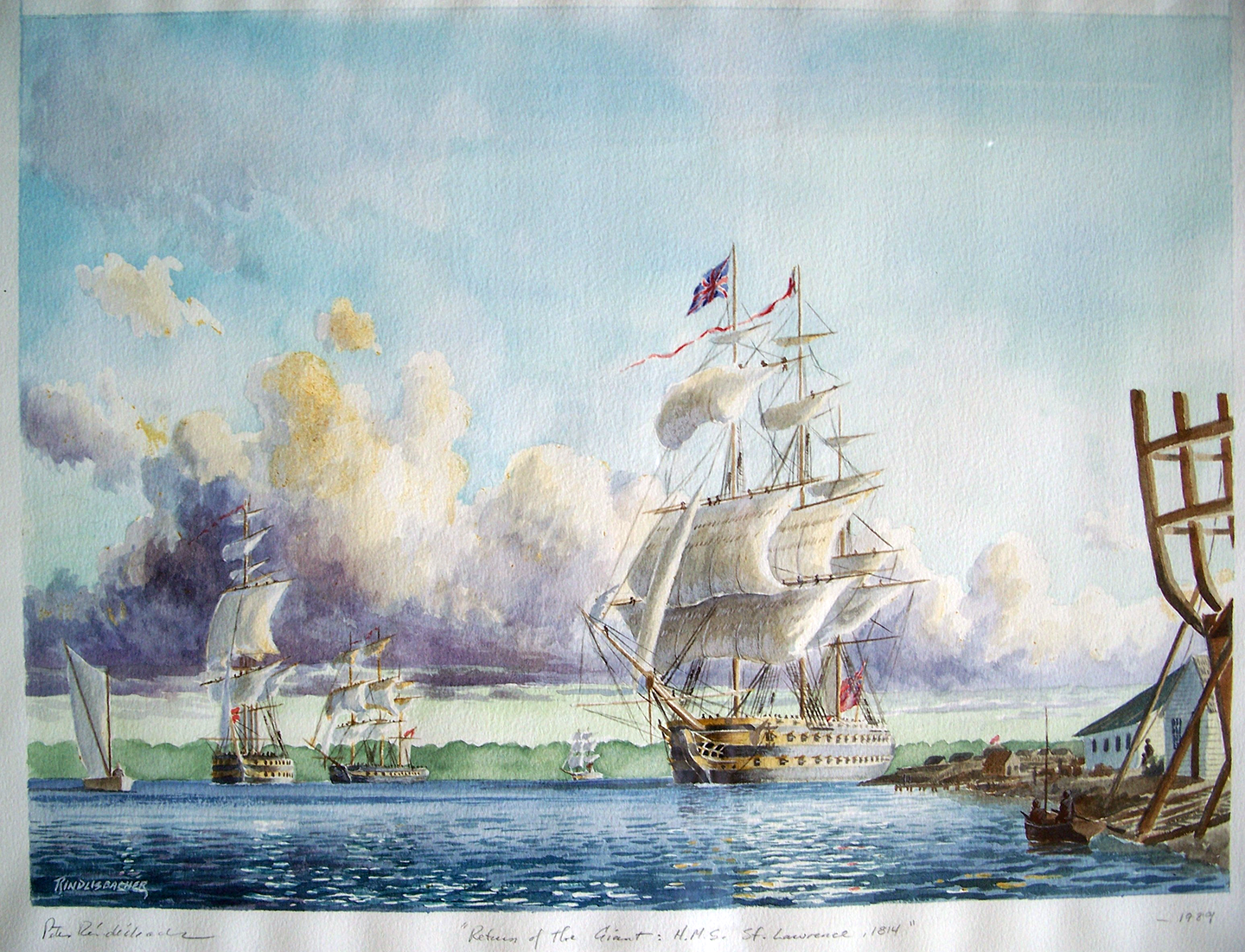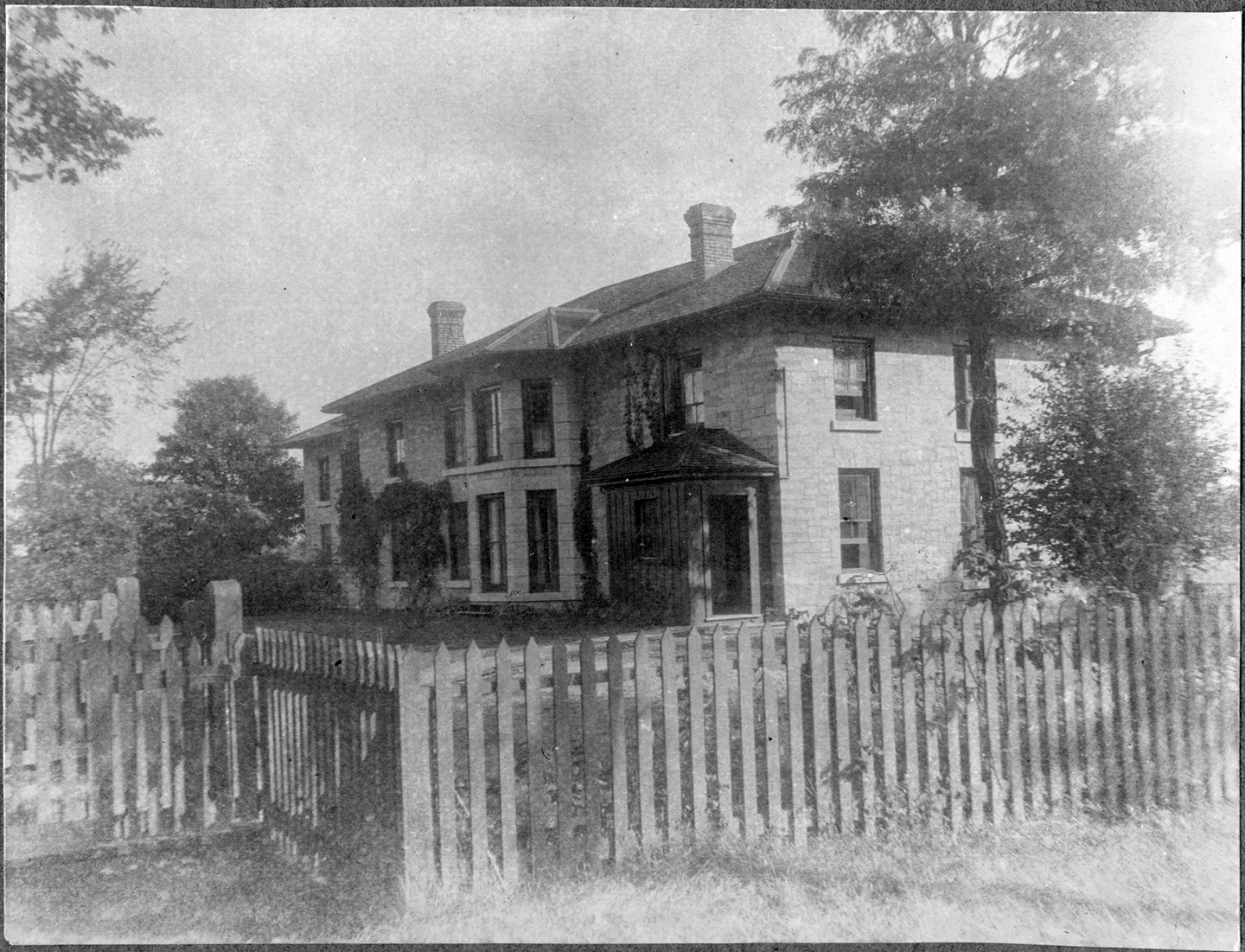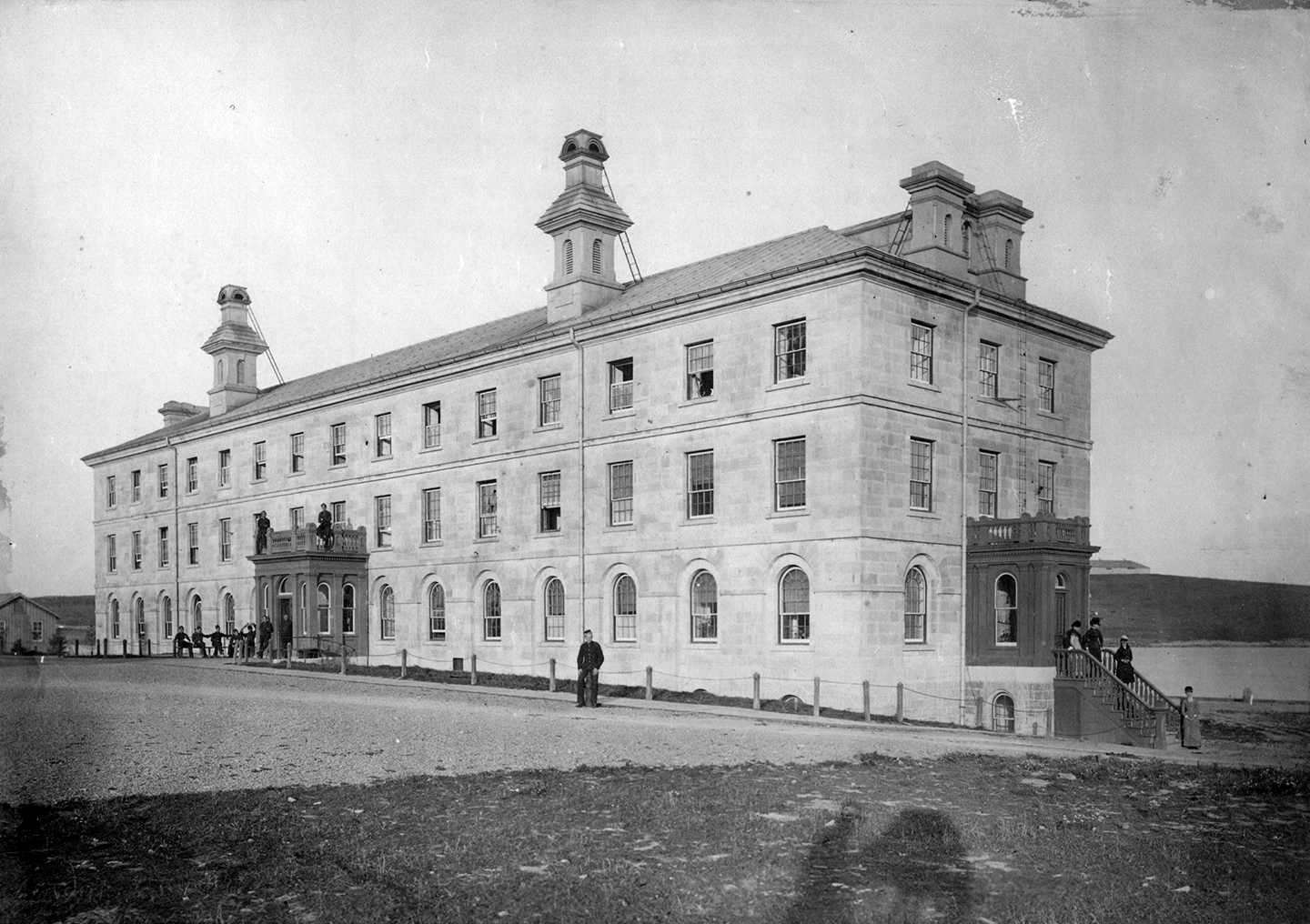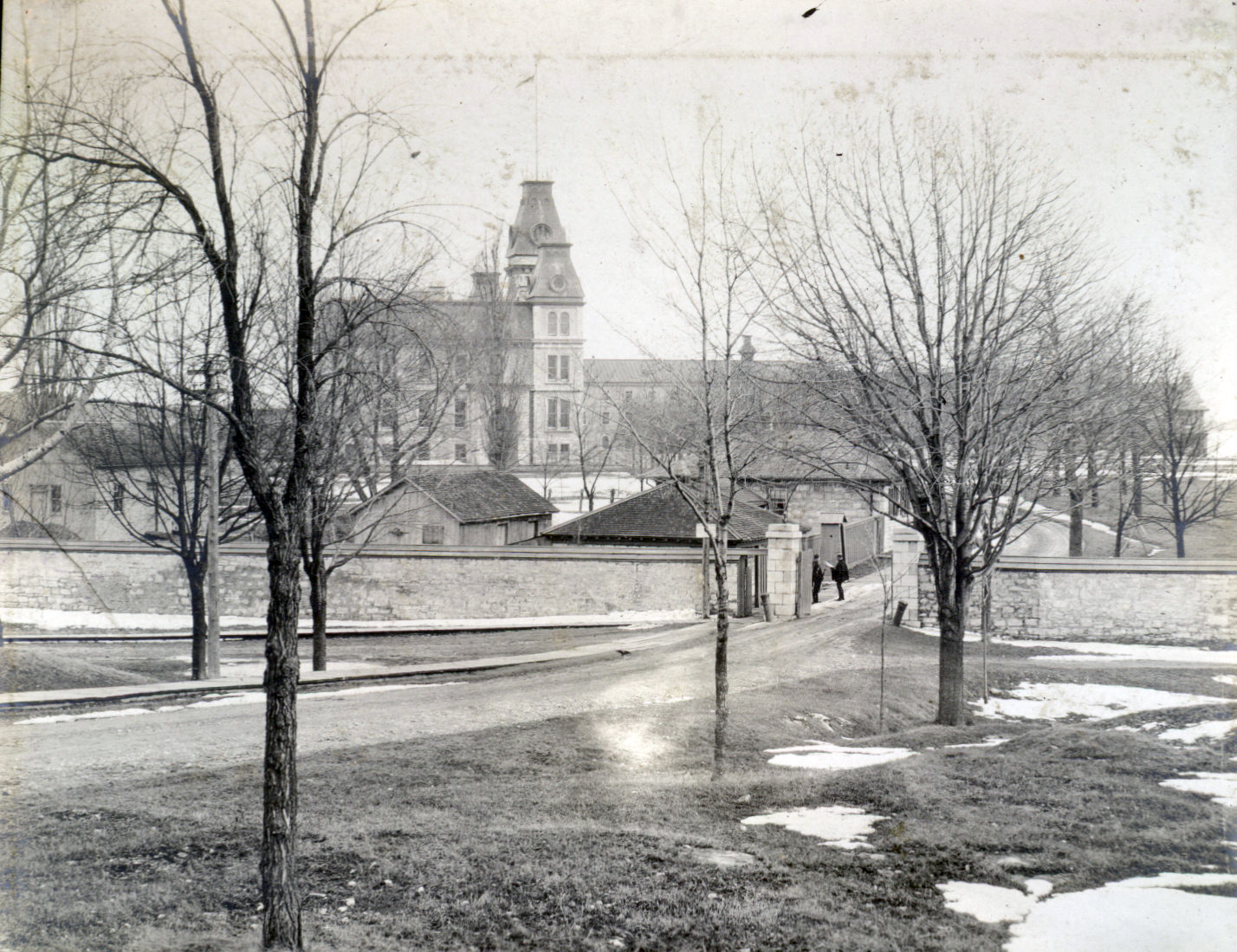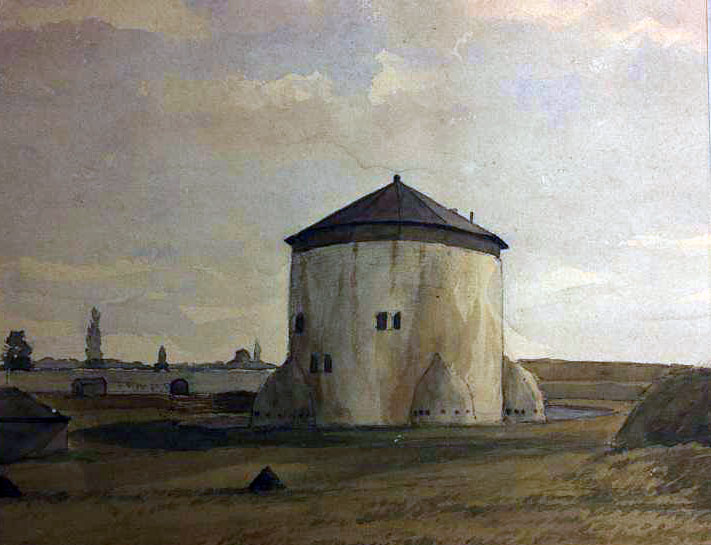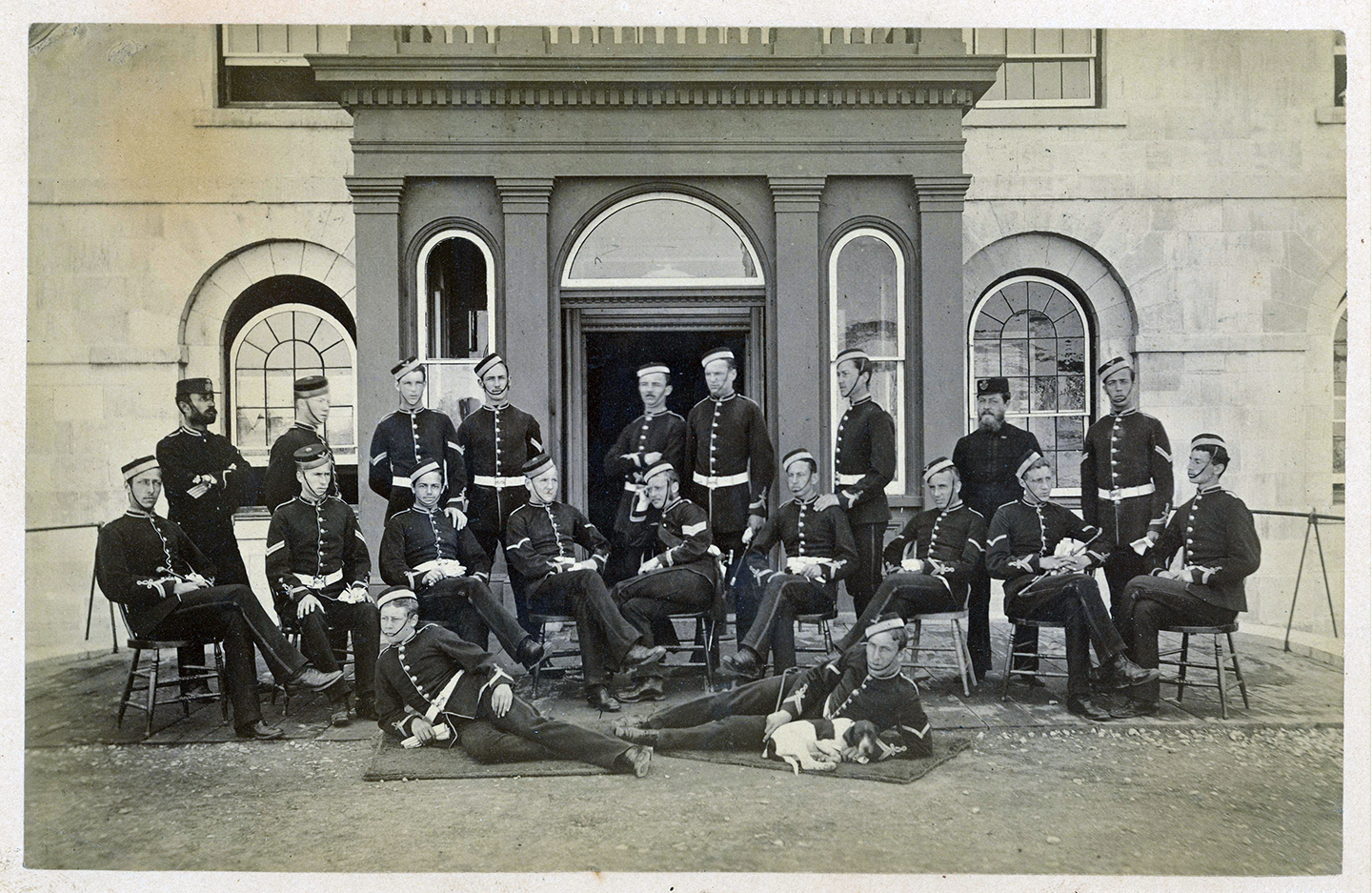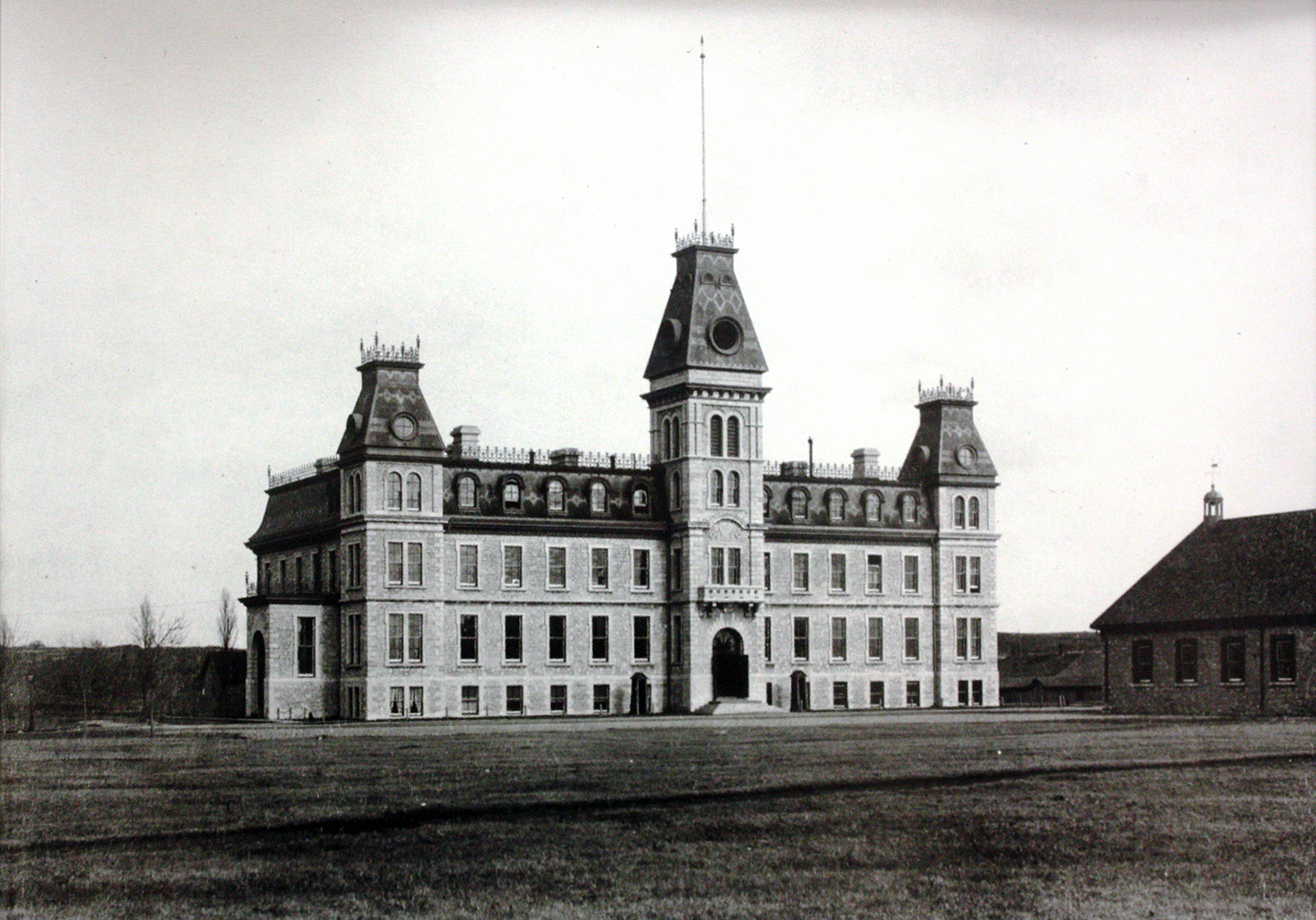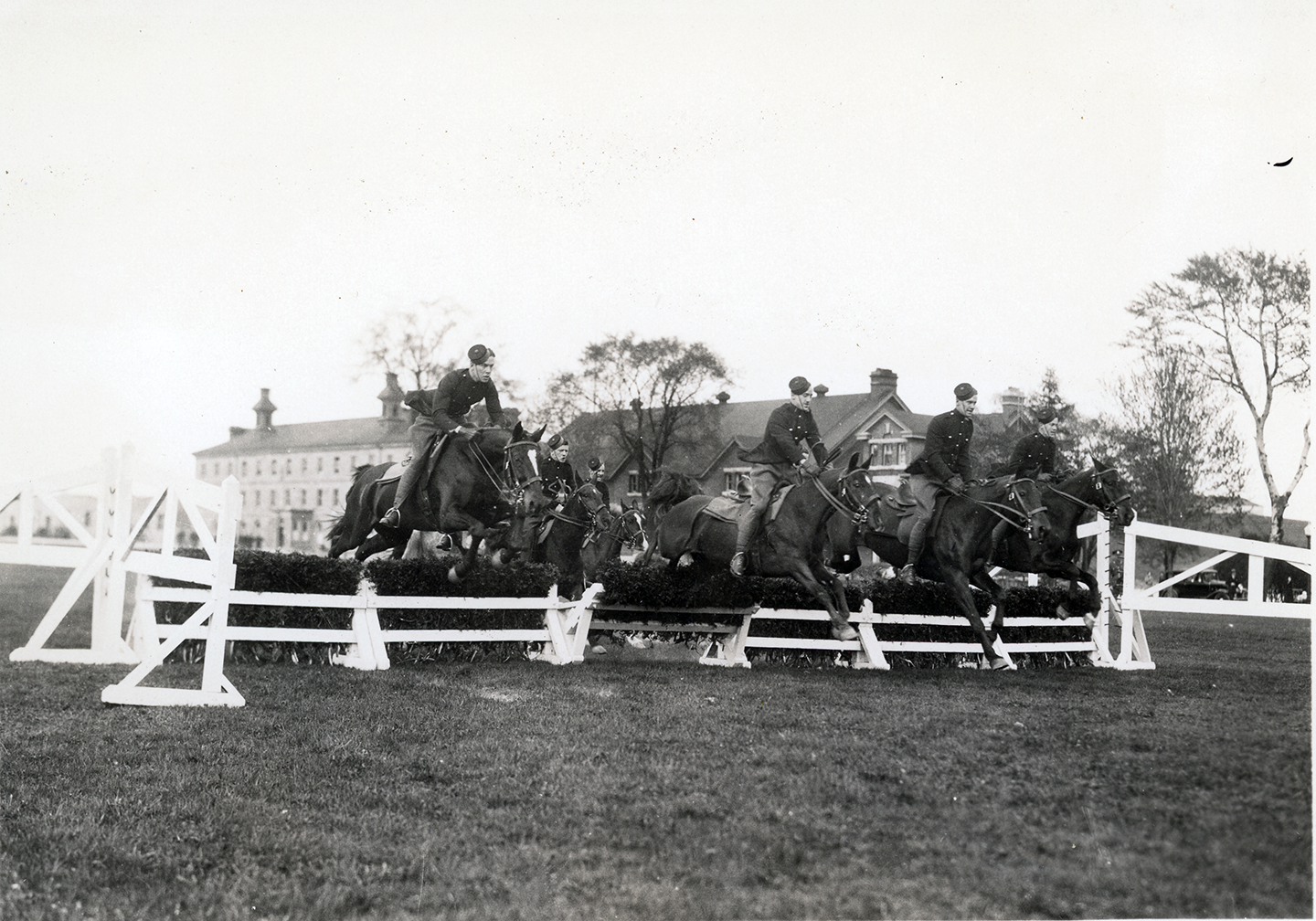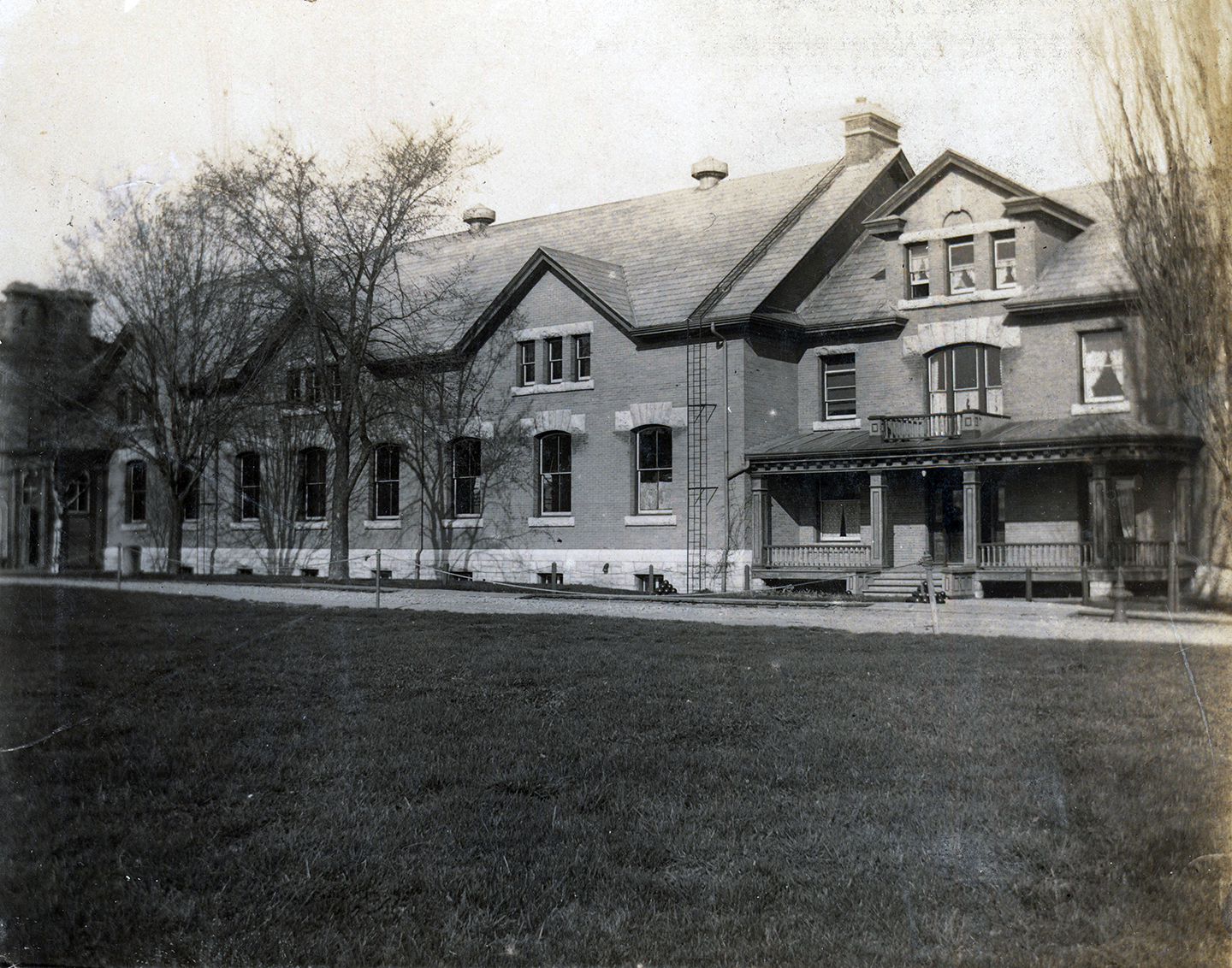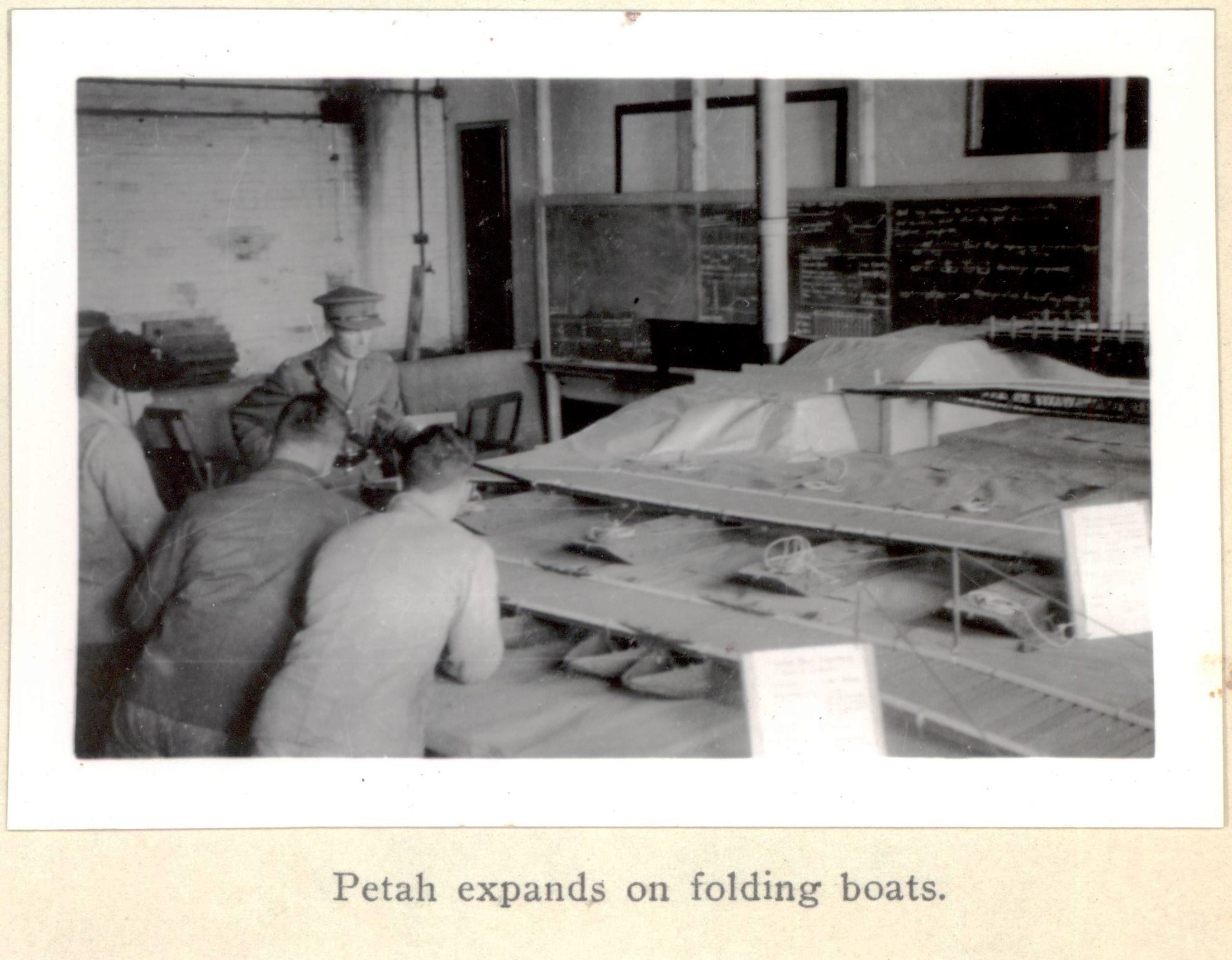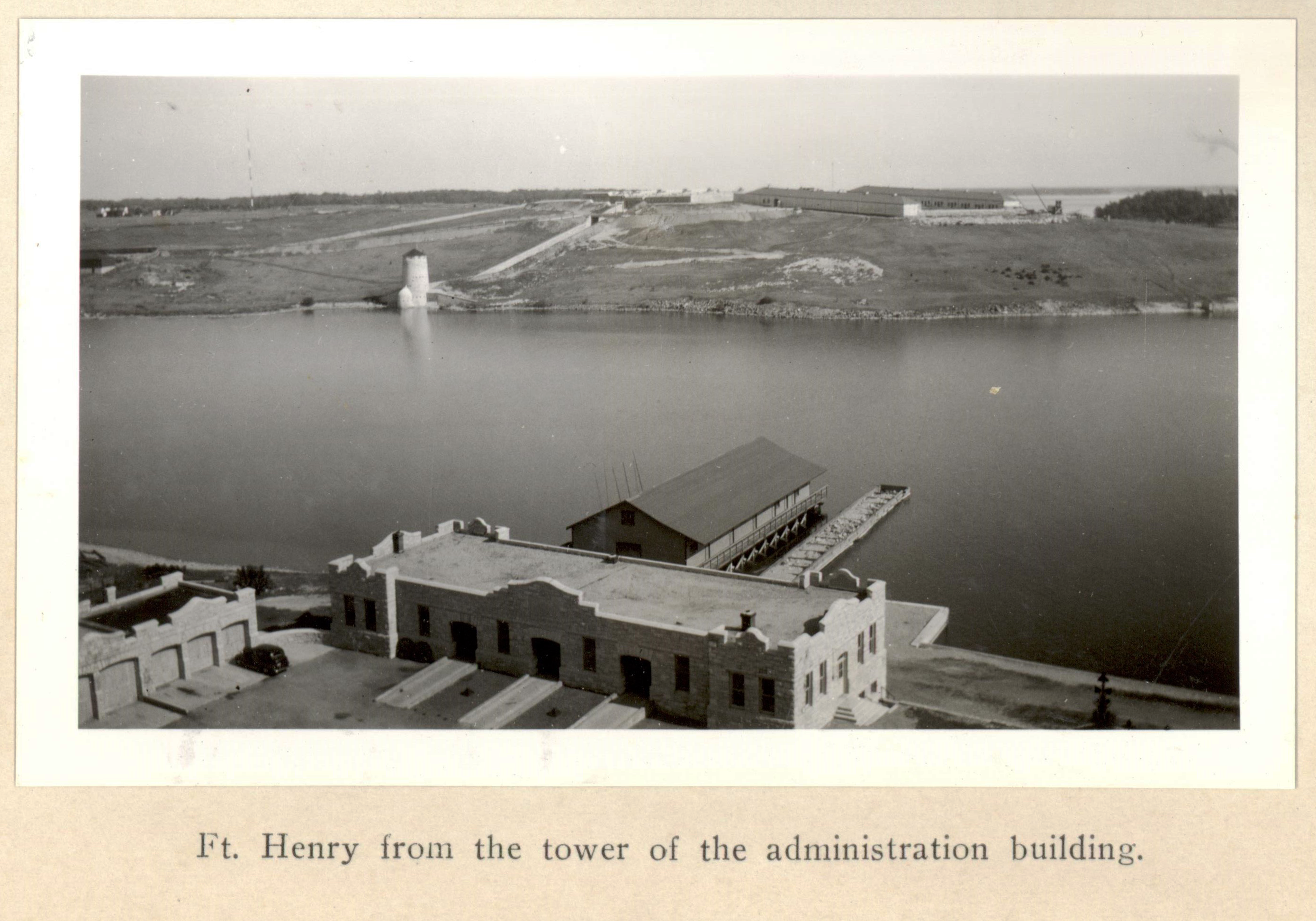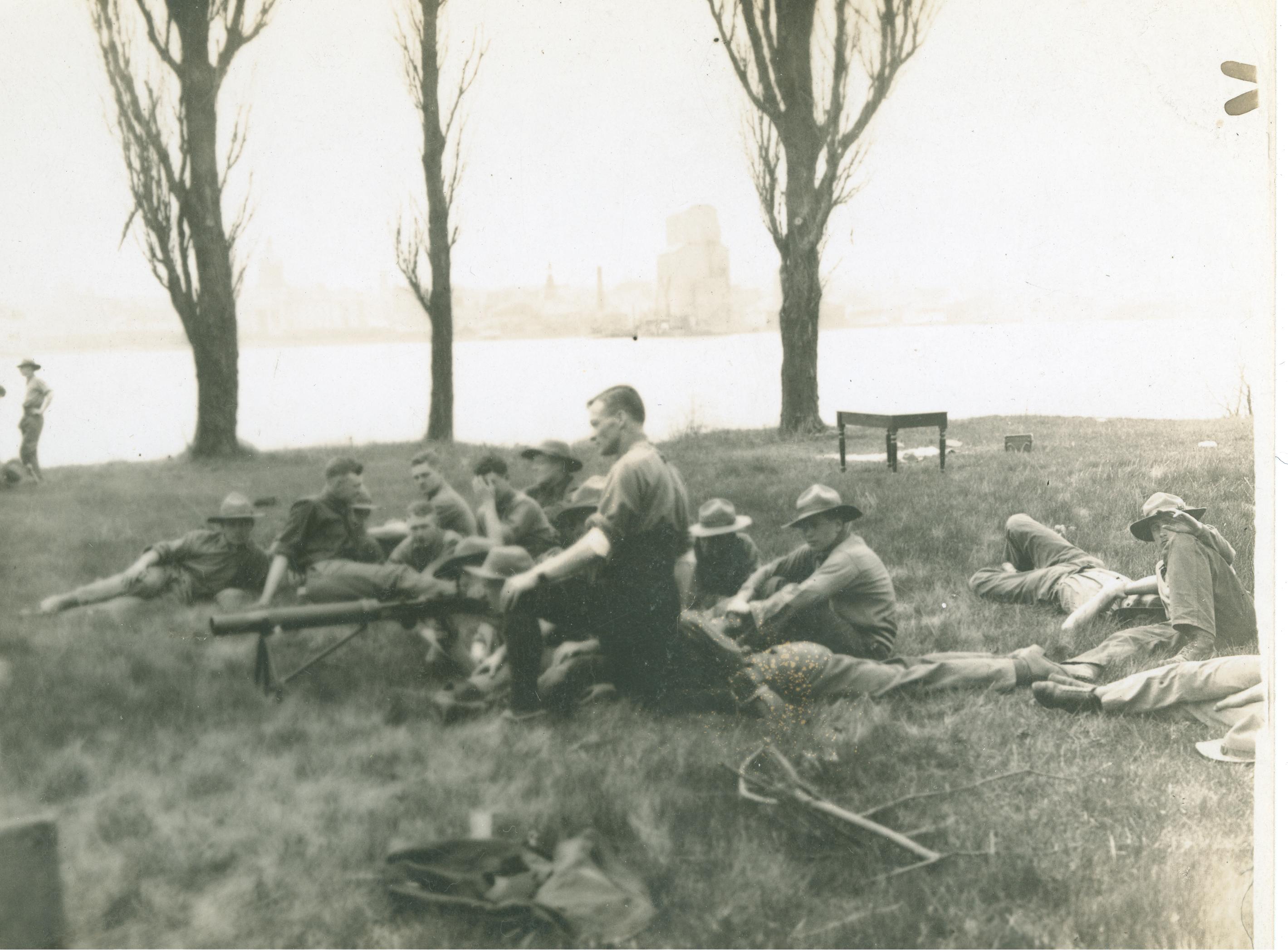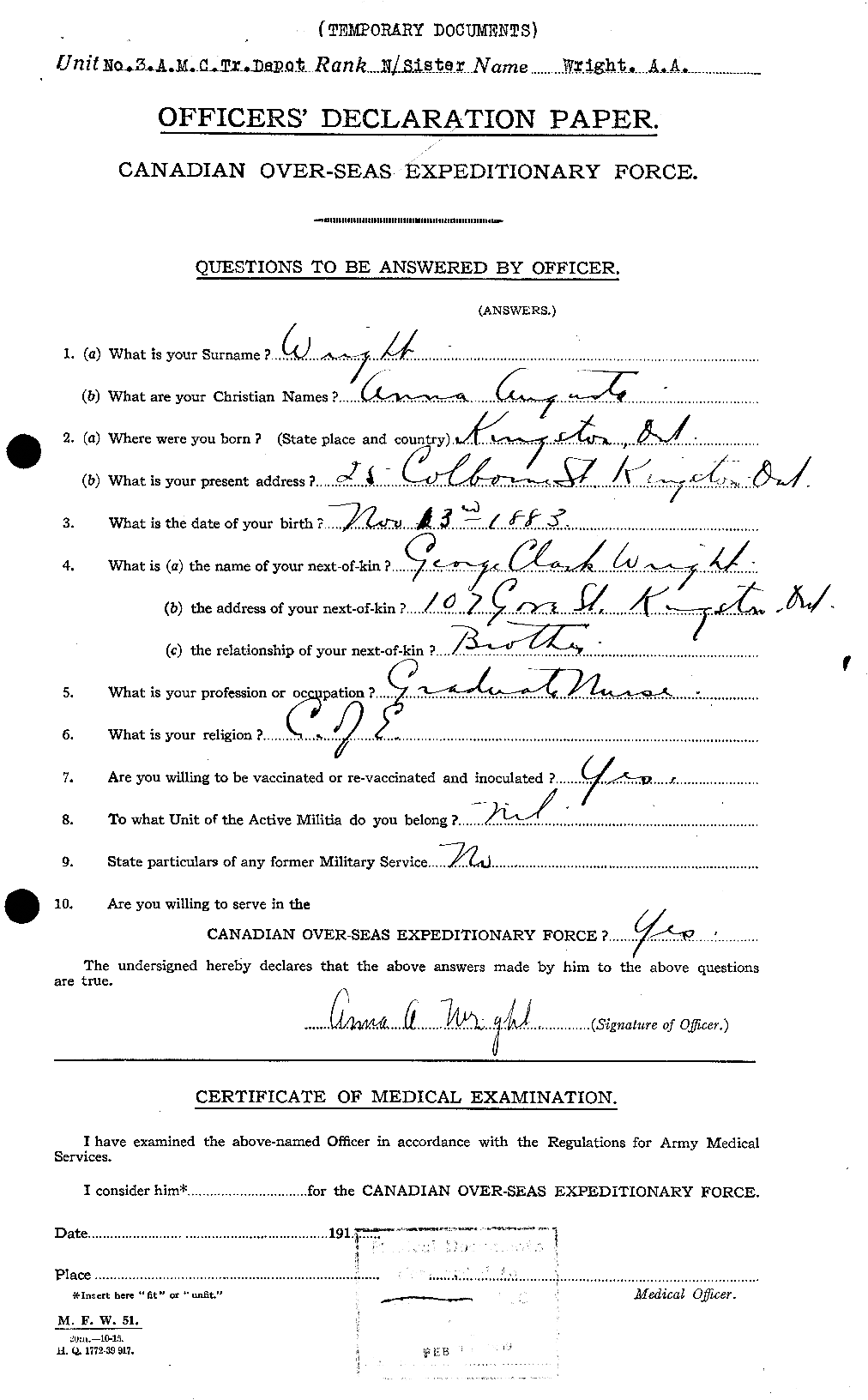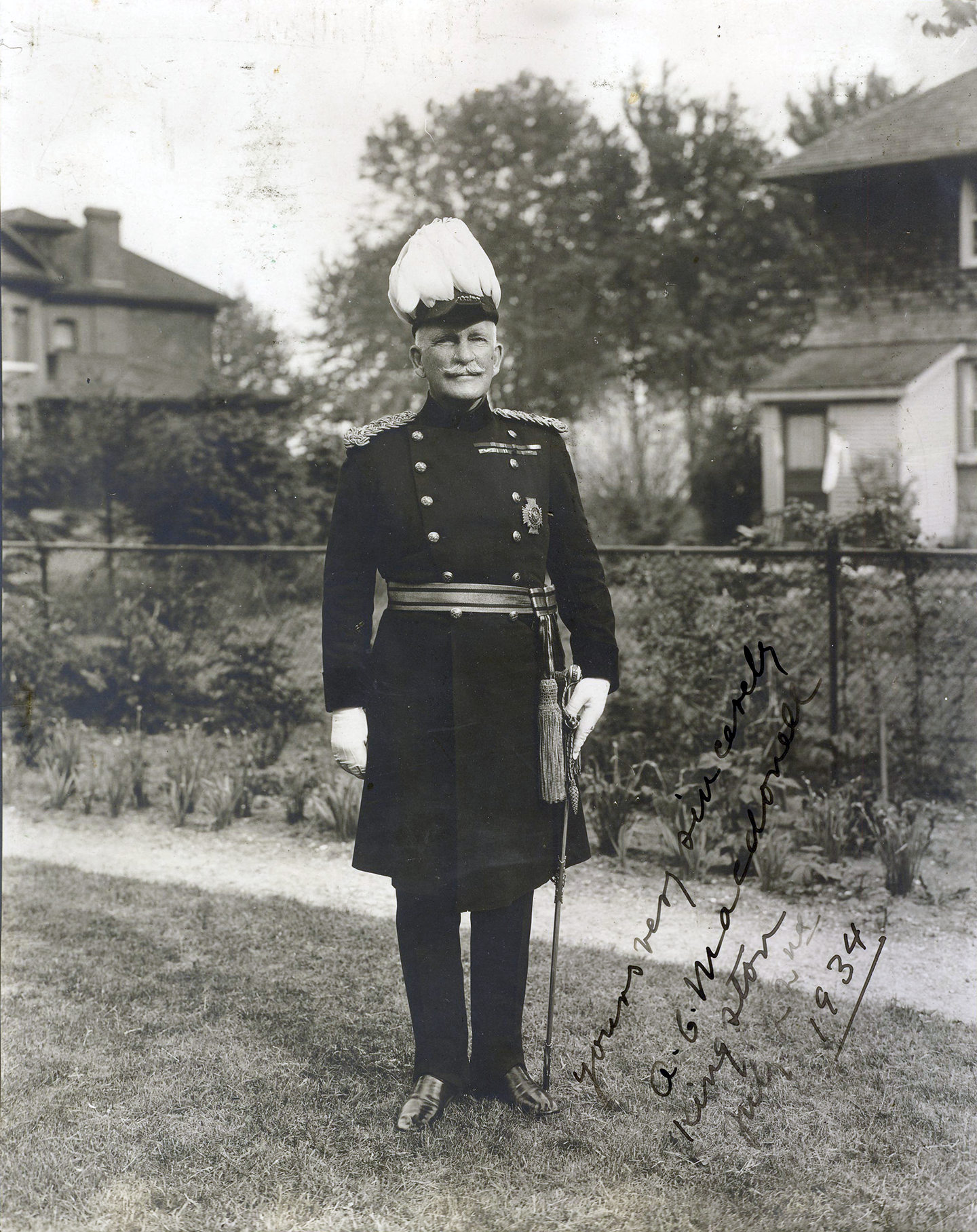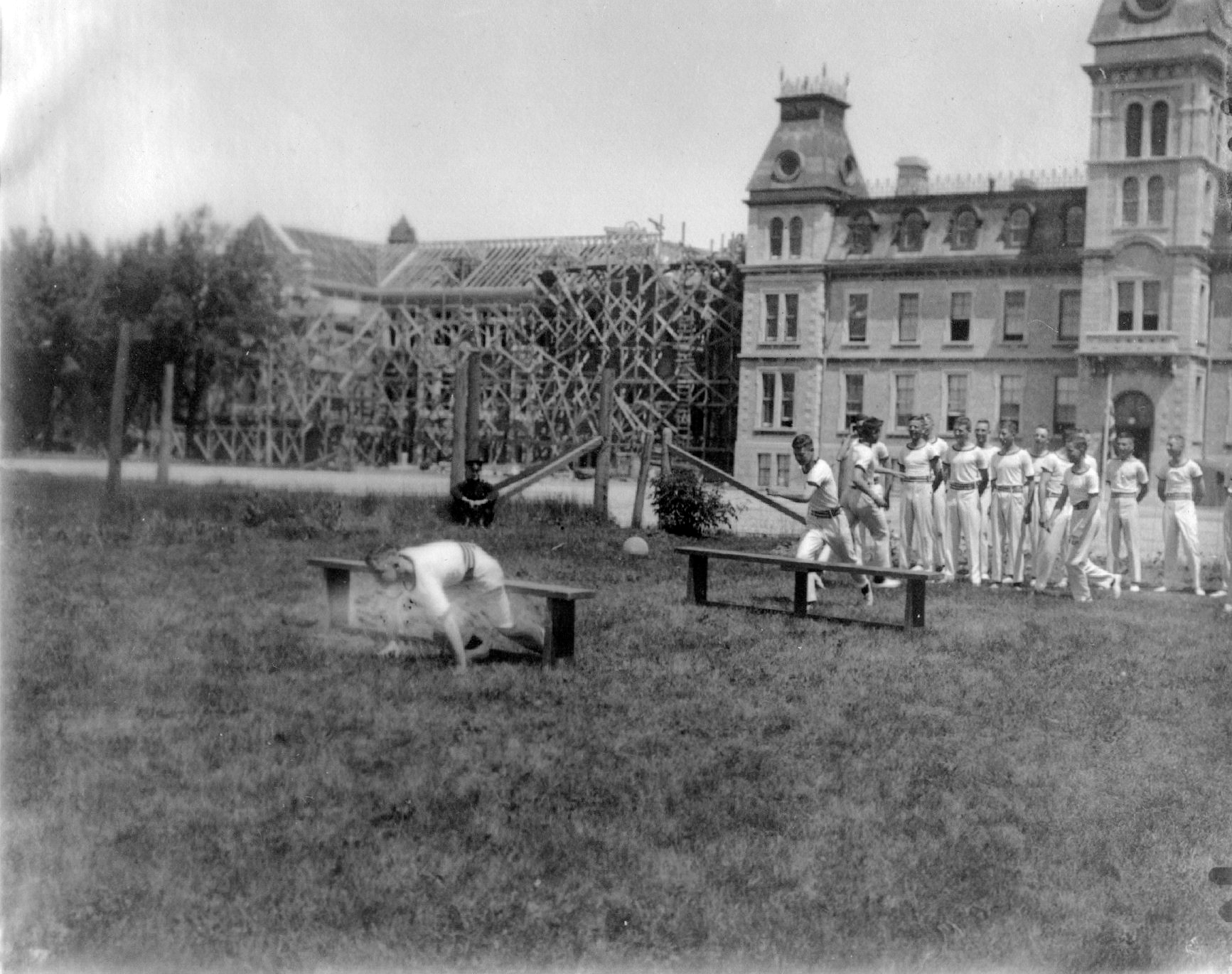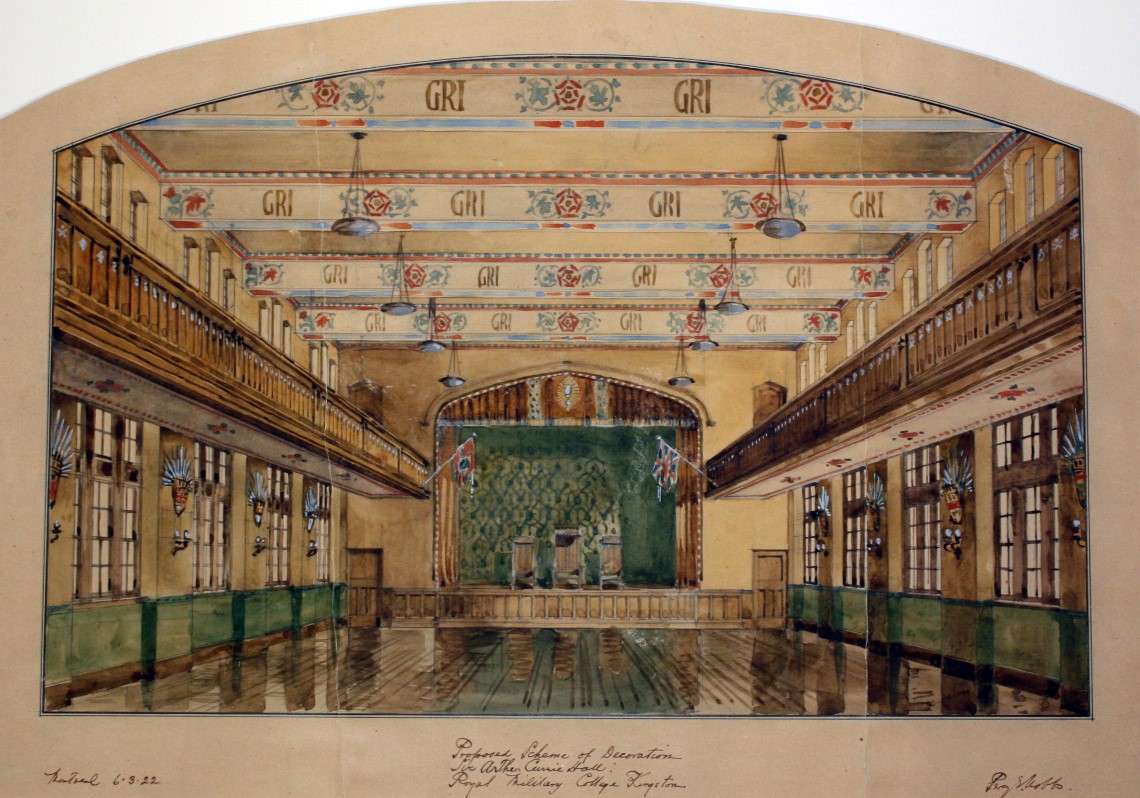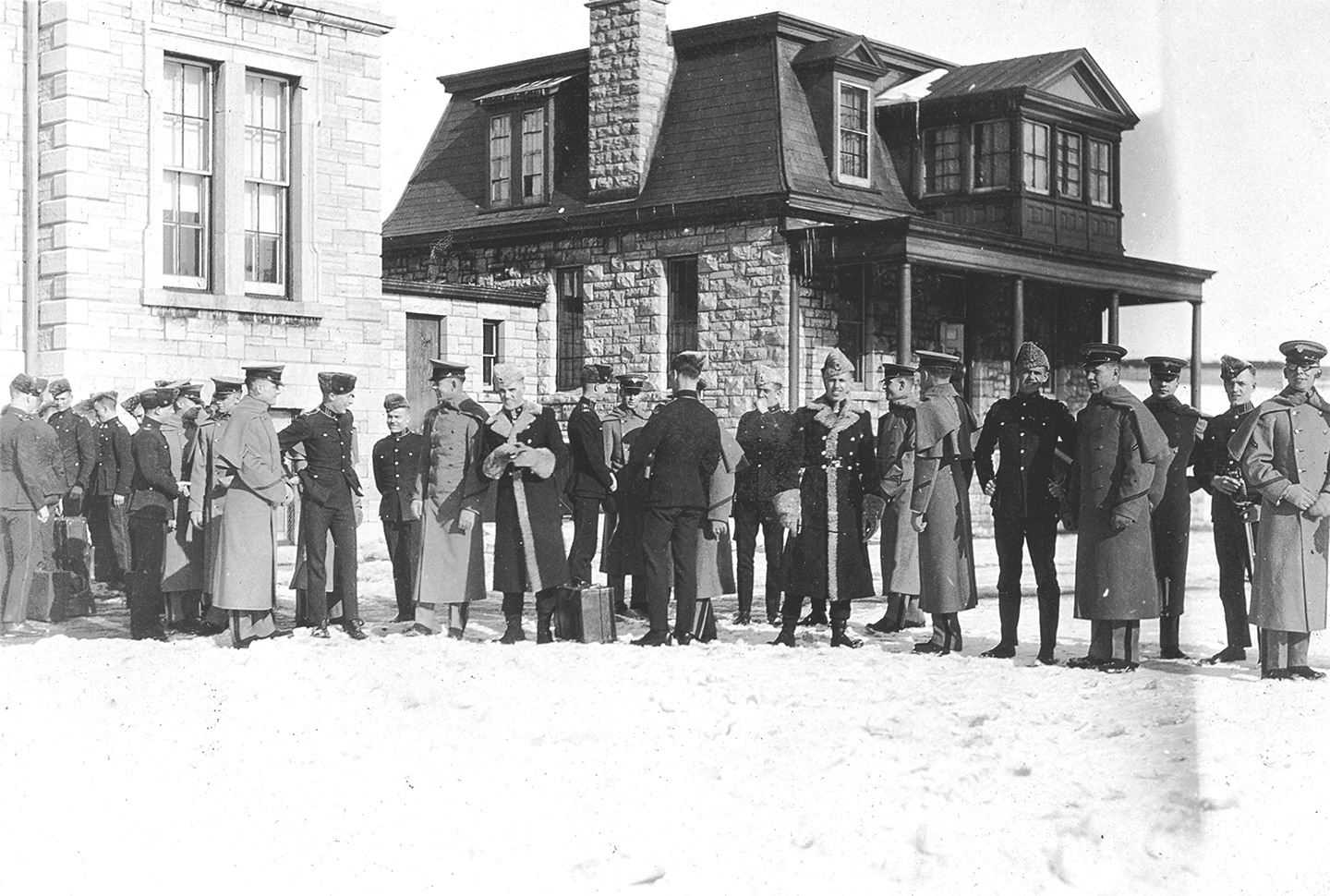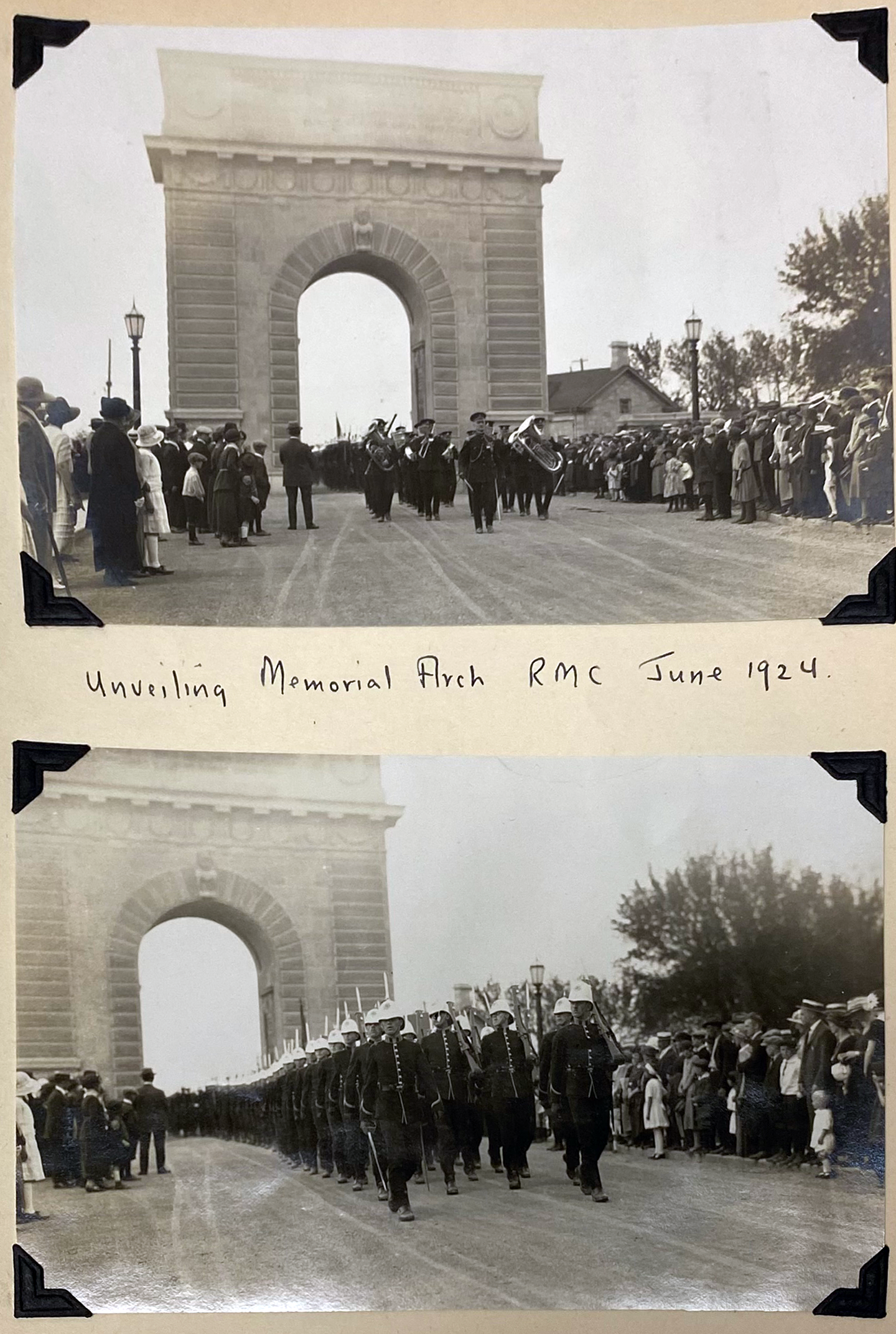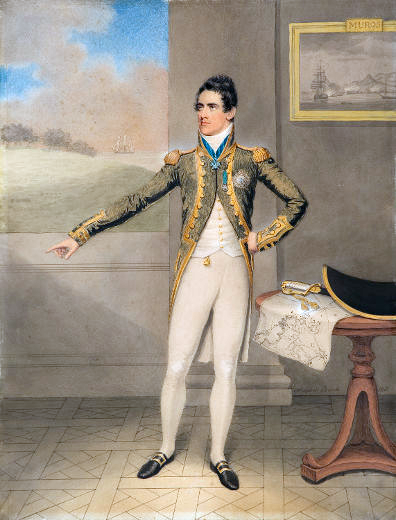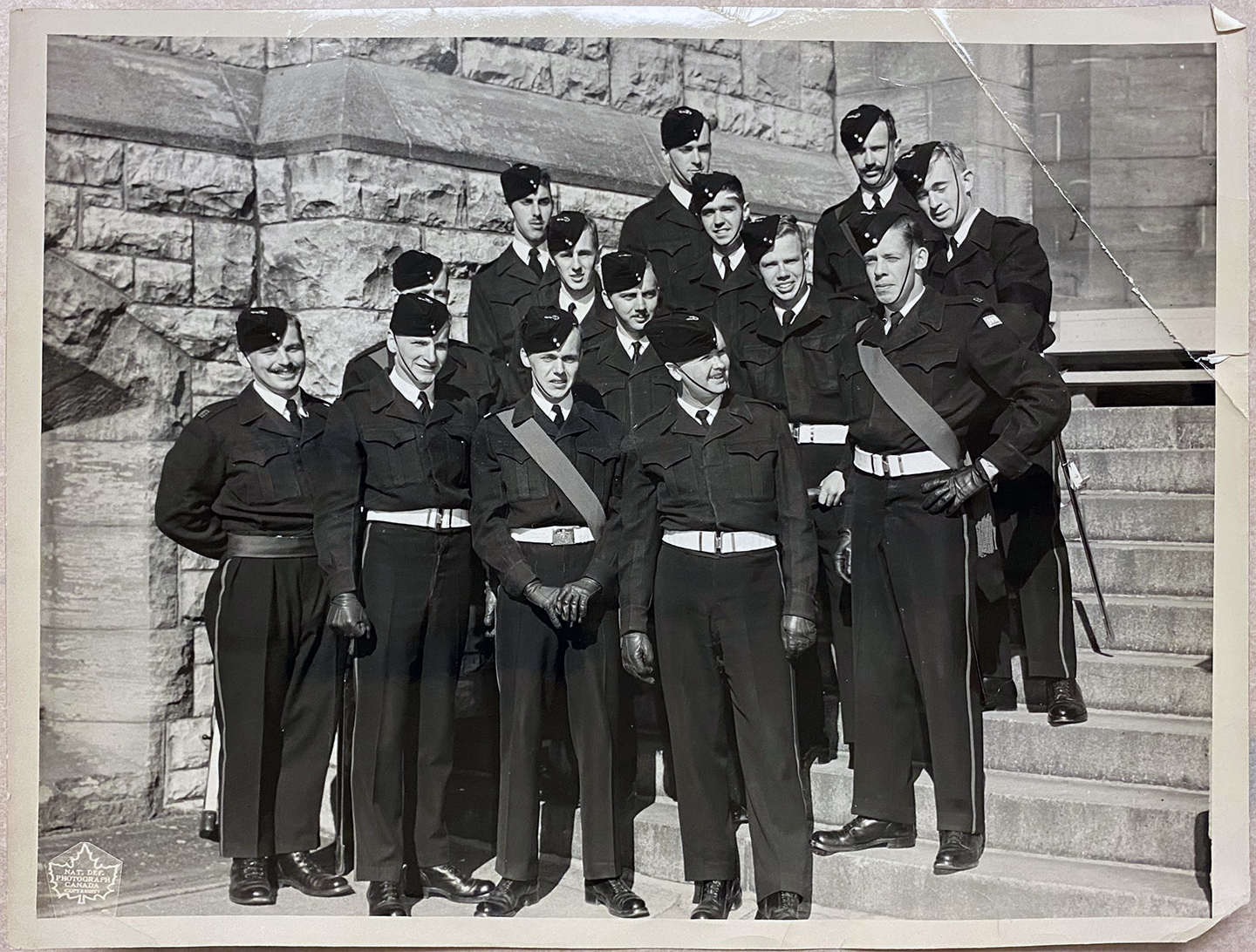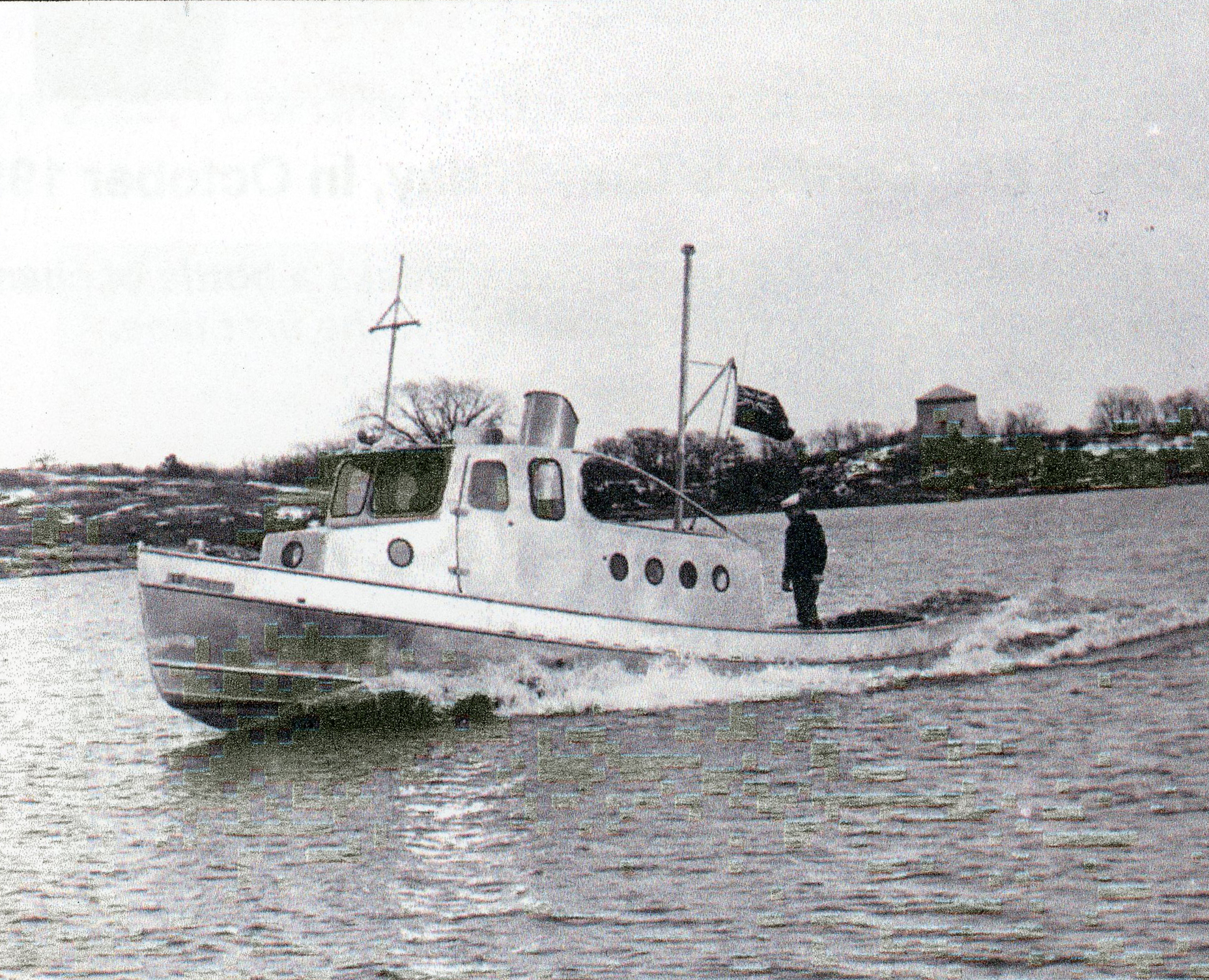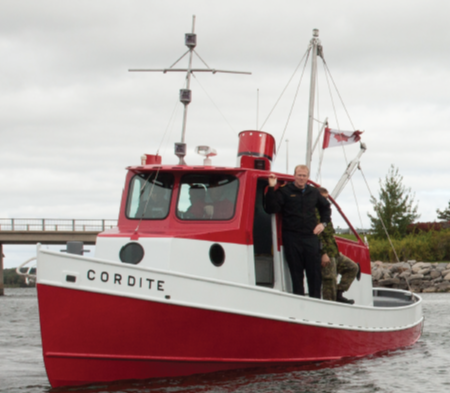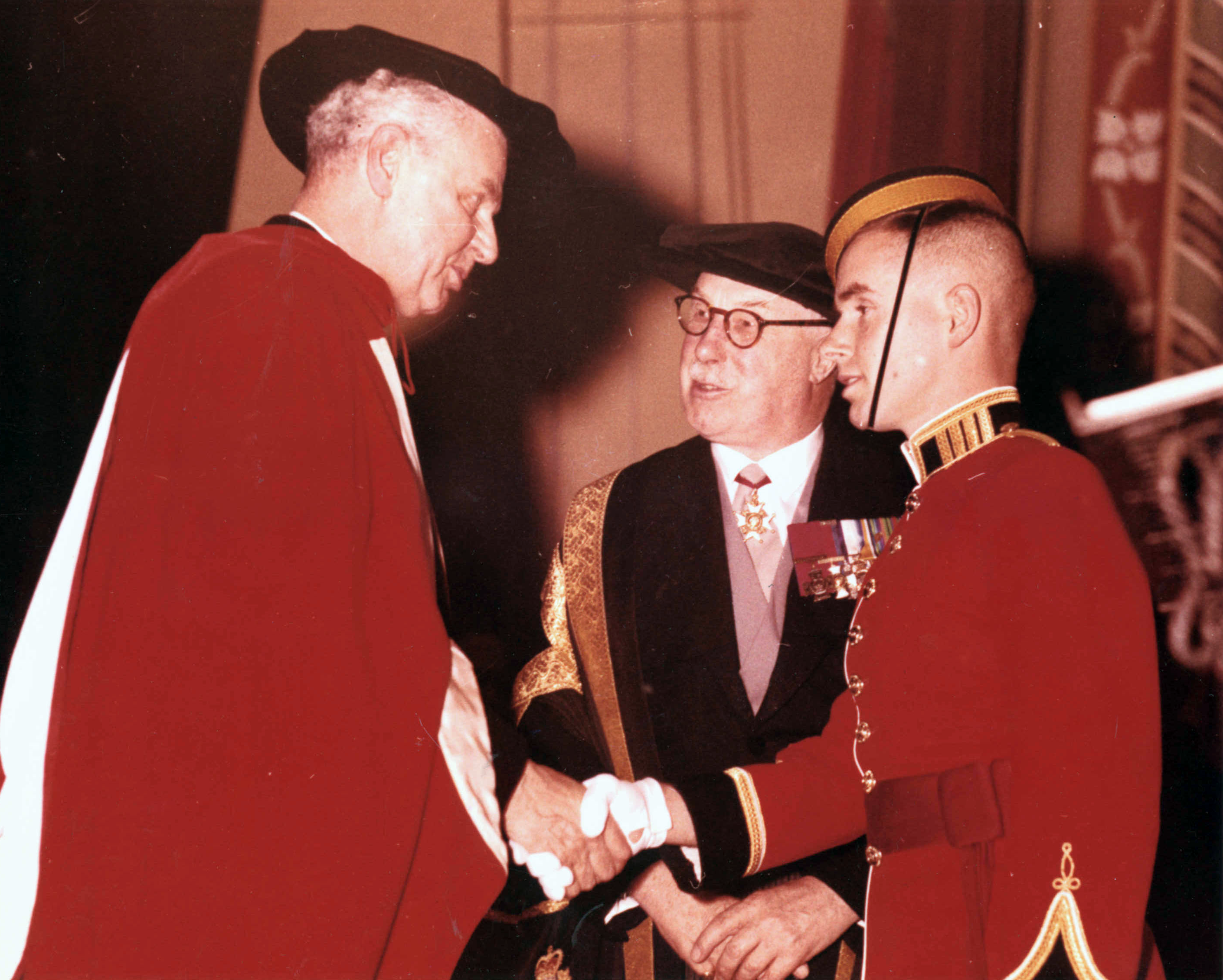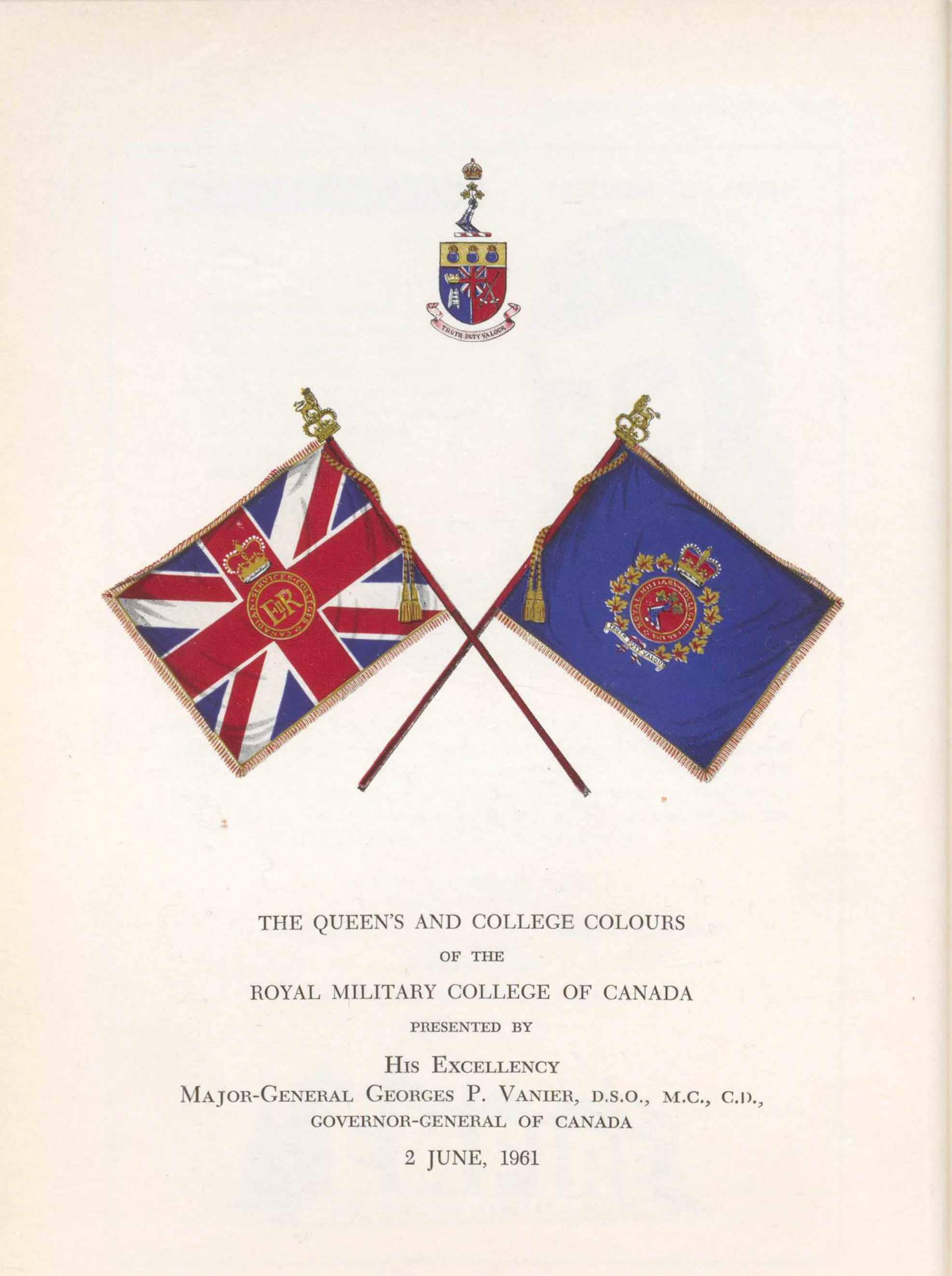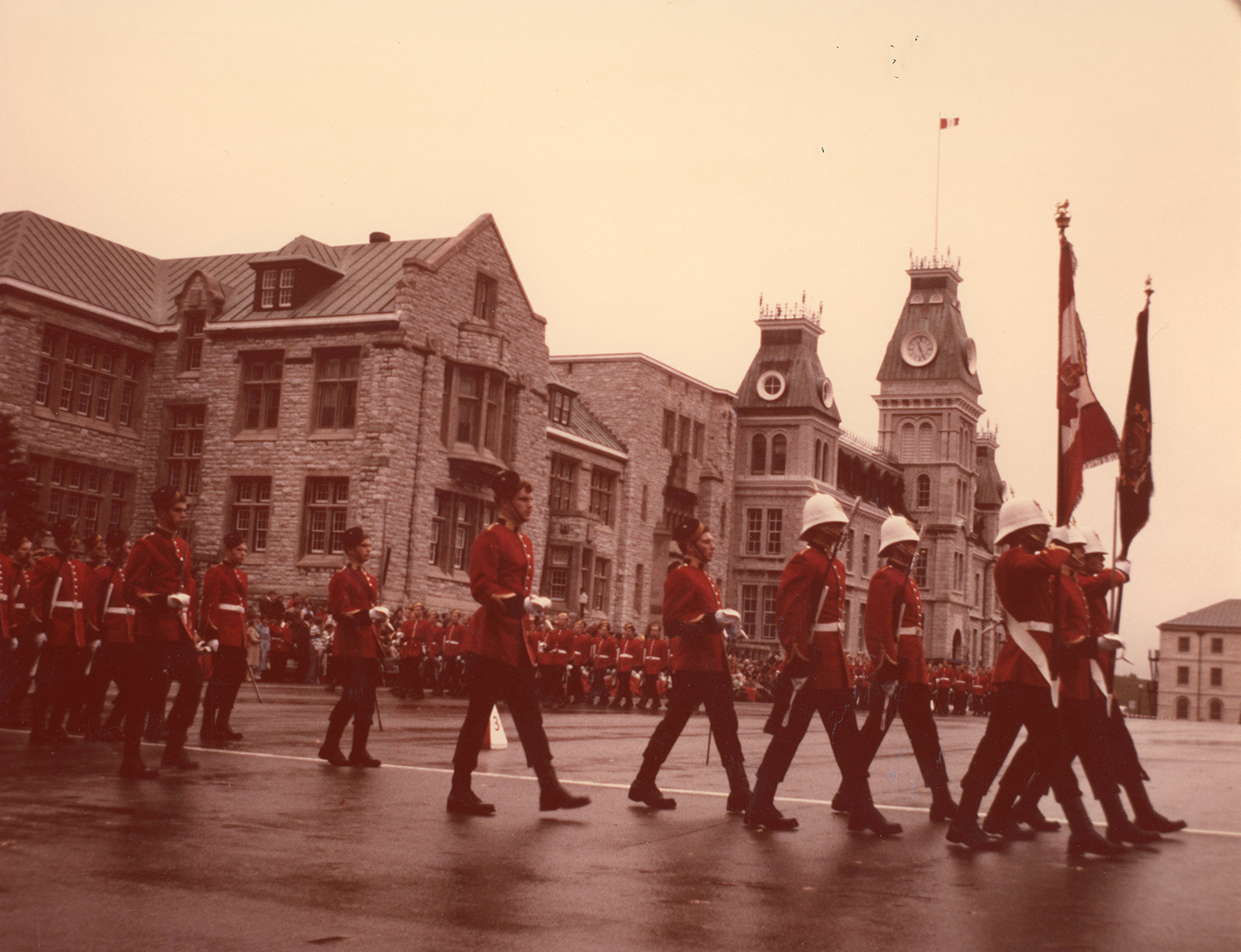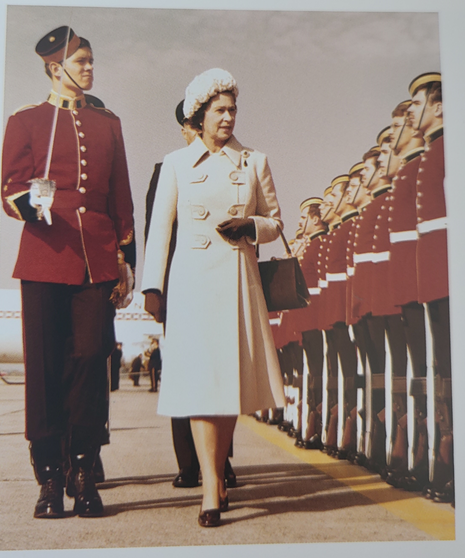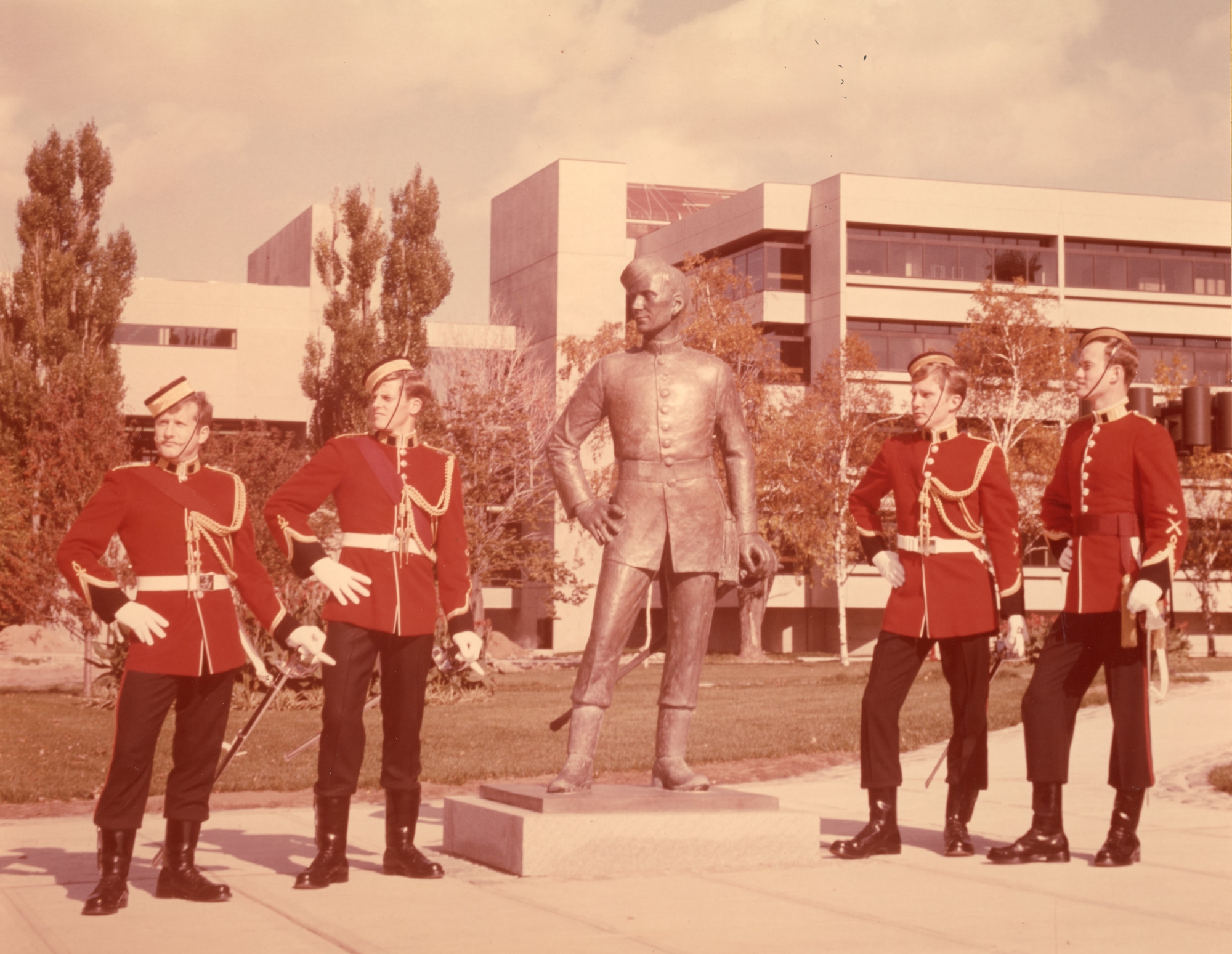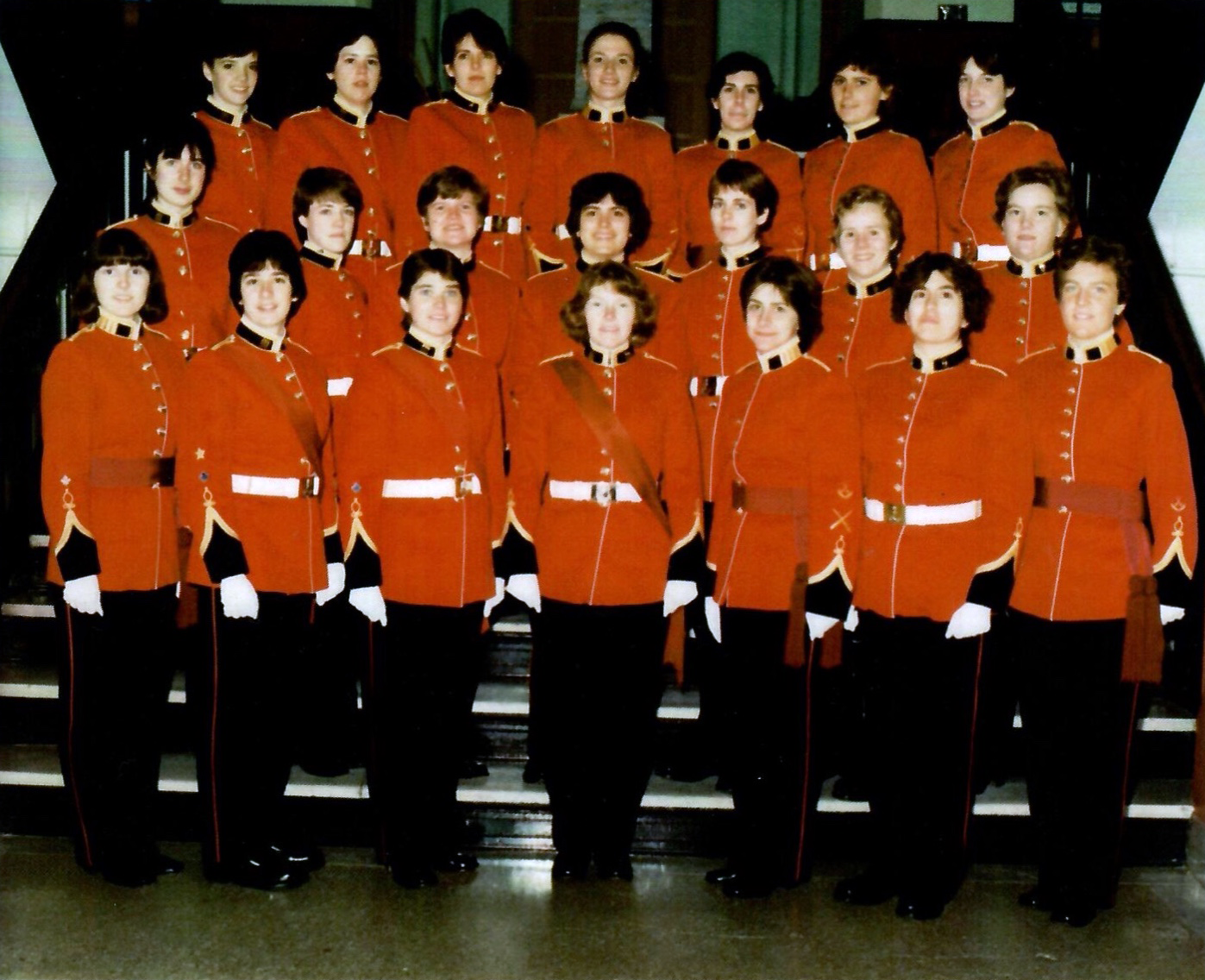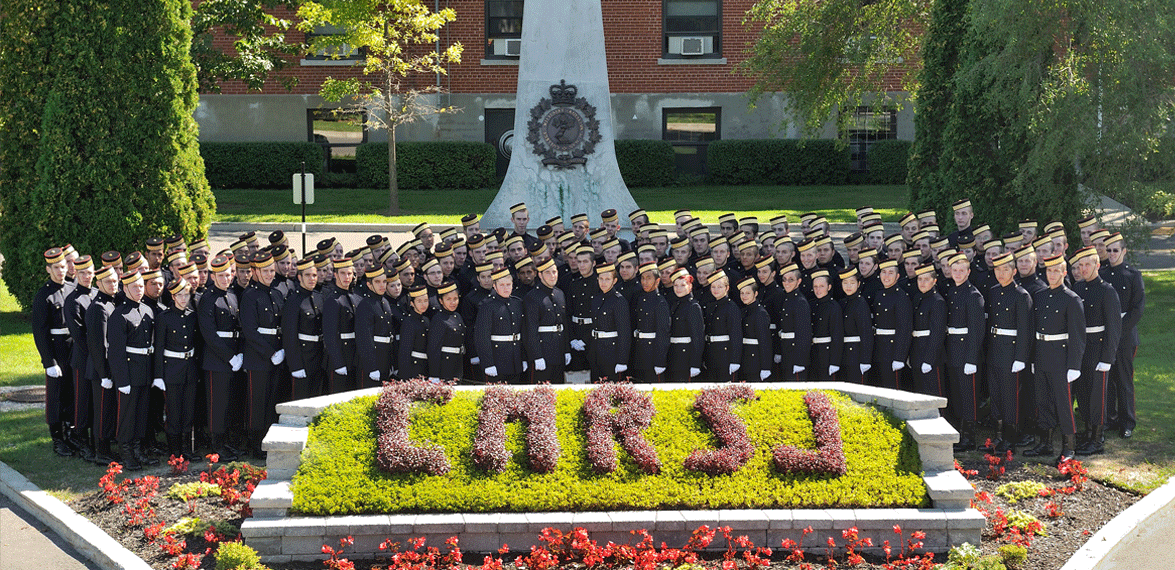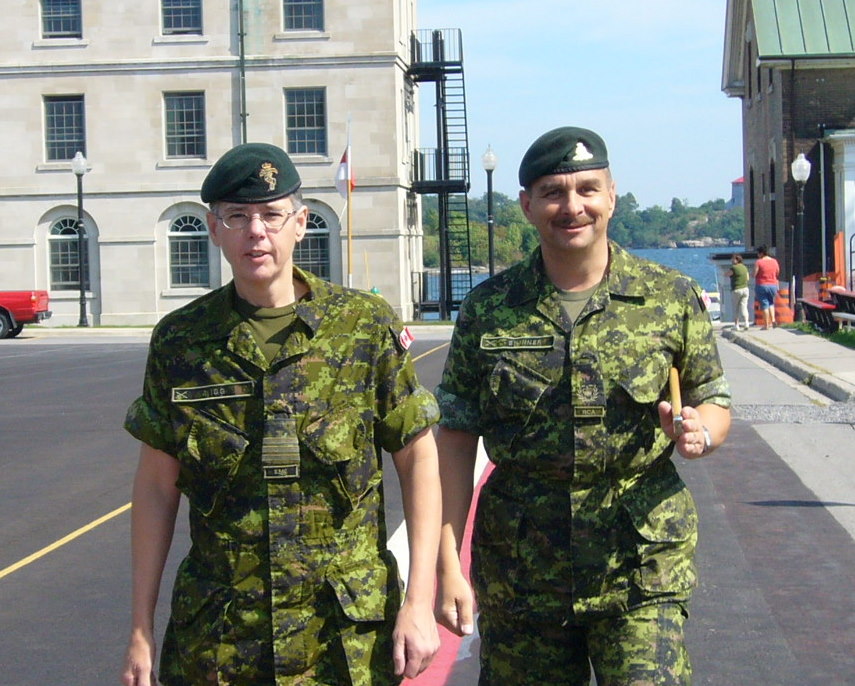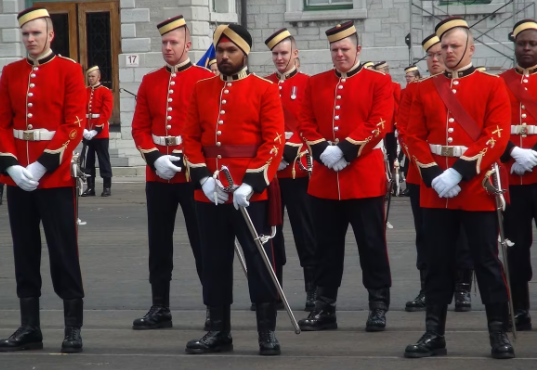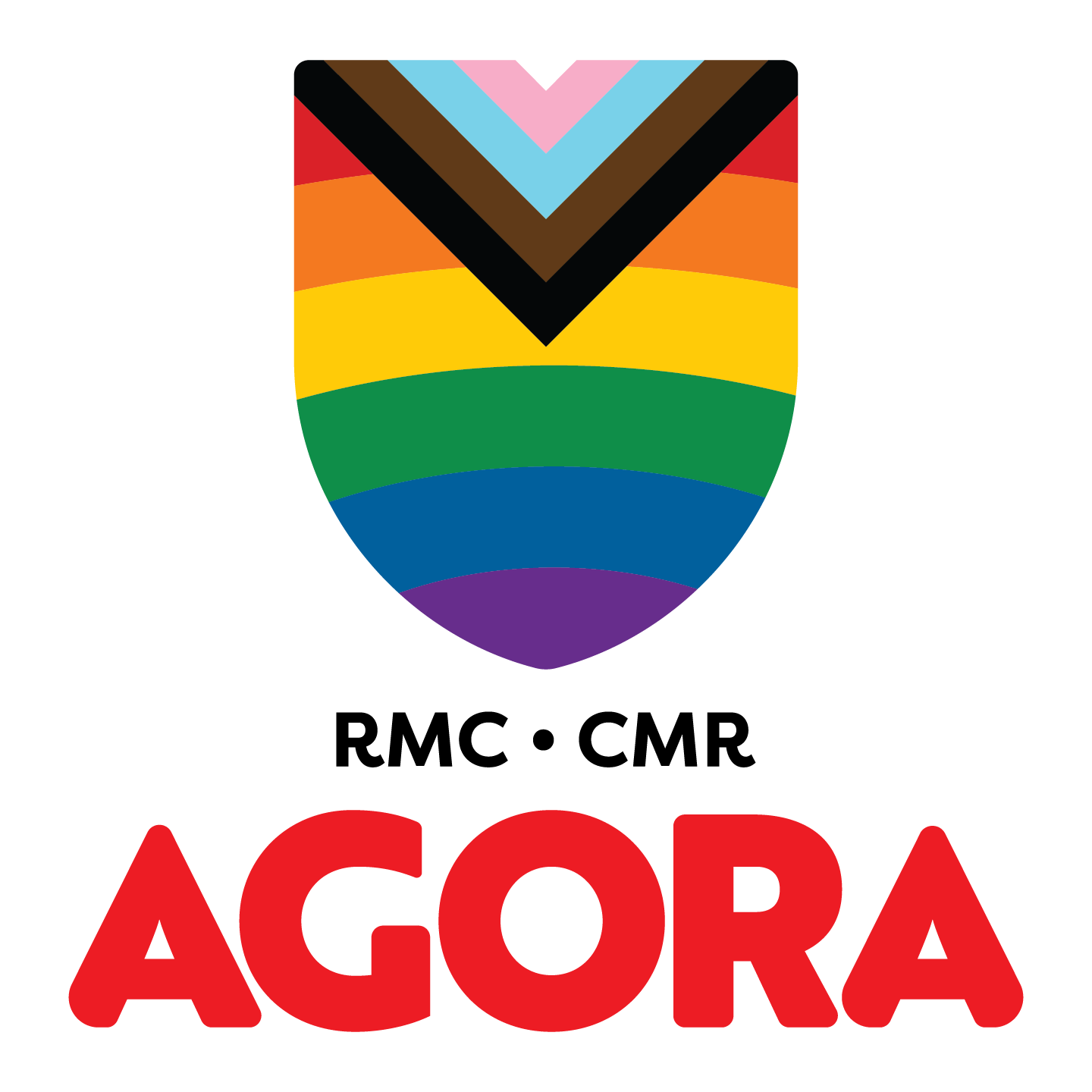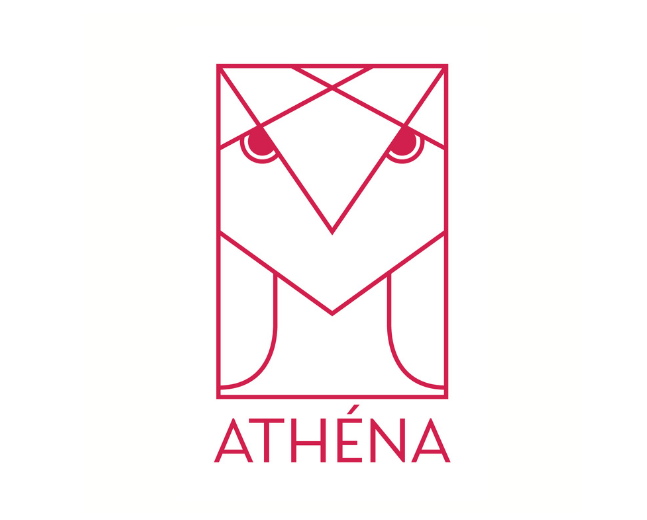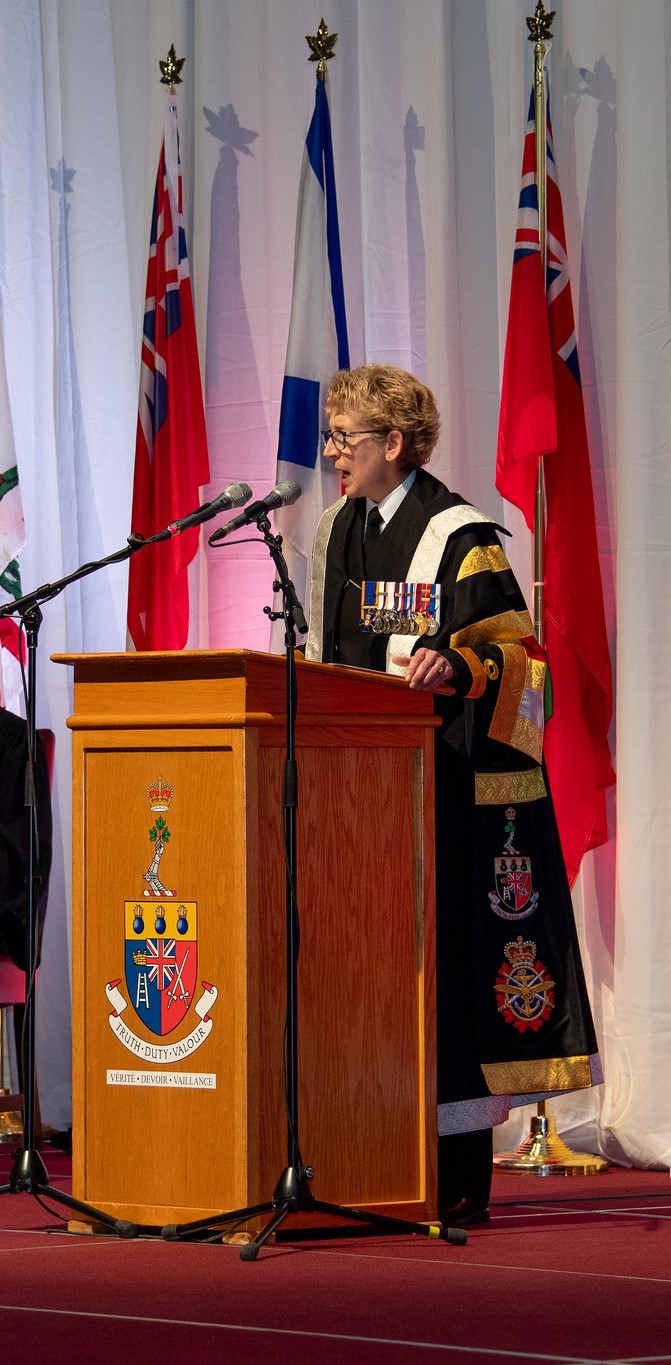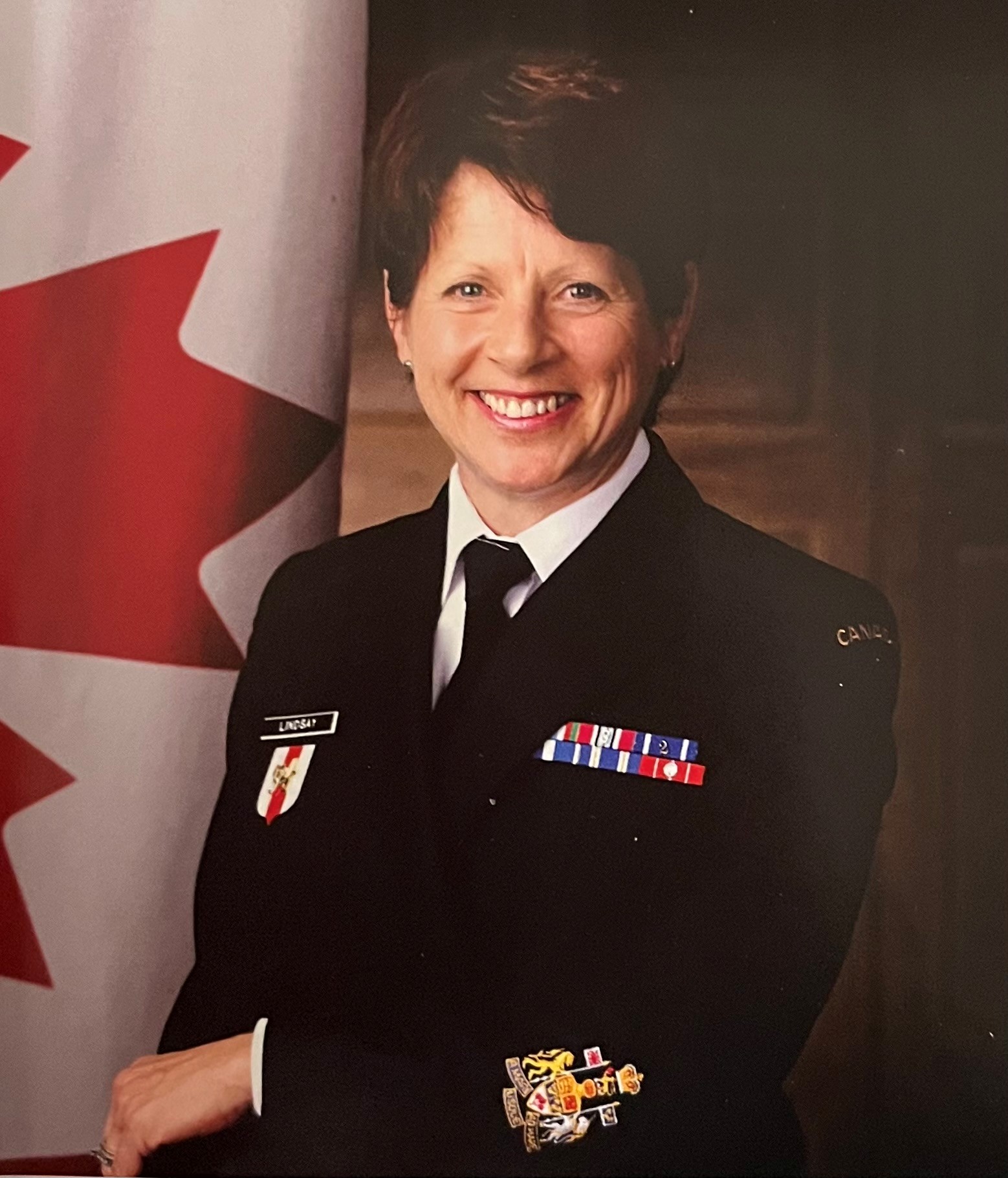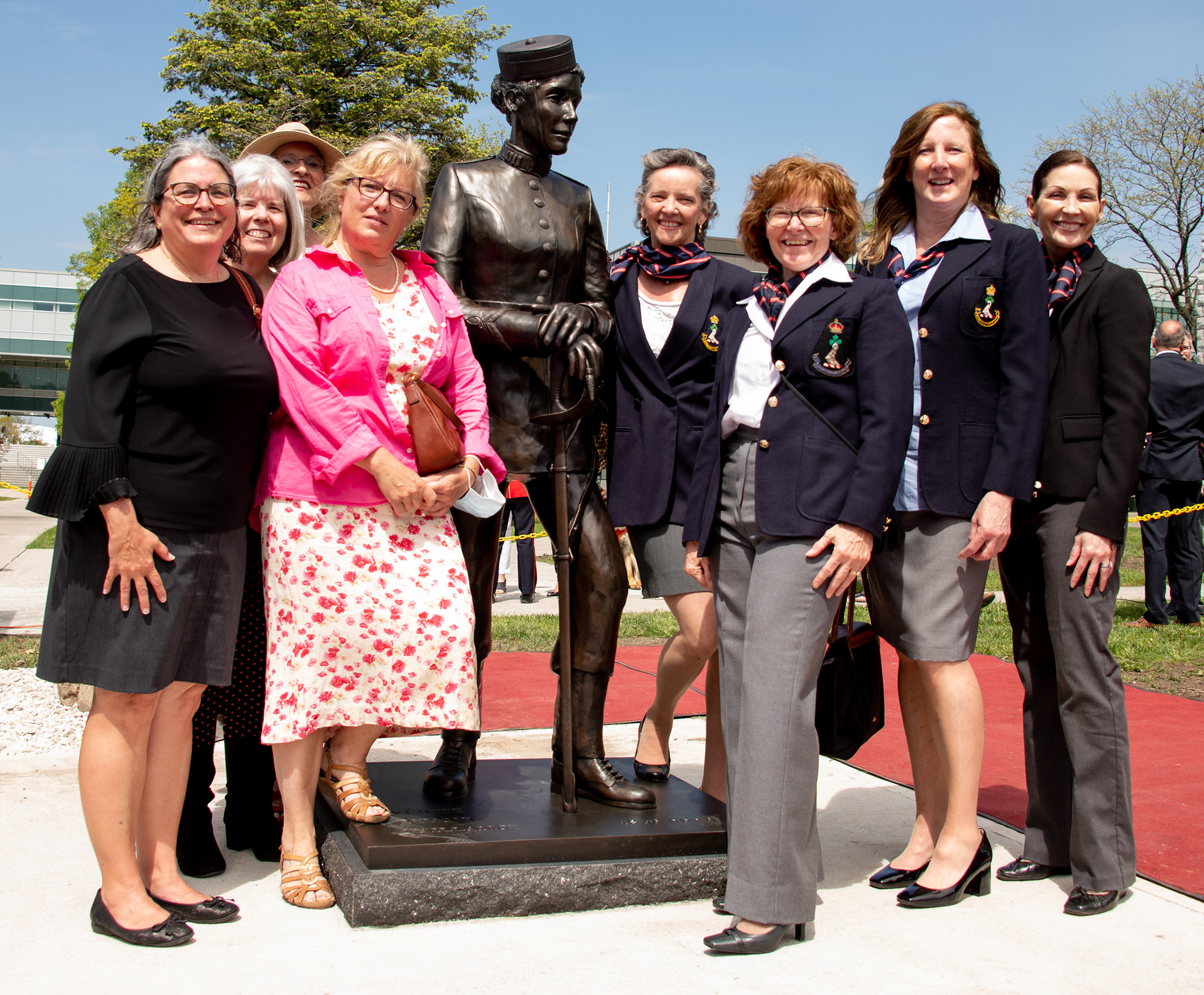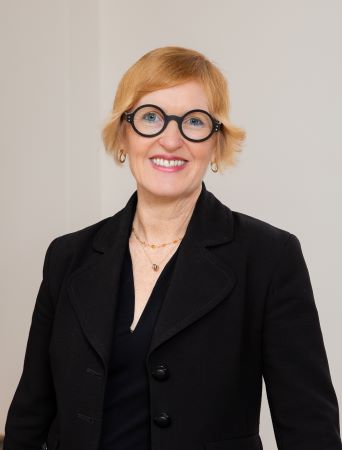Limitation on Content
While we welcome comments on the content of the RMC 150 Timeline, please note that it is simply impossible to highlight all the significant accomplishments and contribution to Canada the students, staff and faculty of RMC have made over the last 150 years.*
C 7,000 BCE to 1700
The Haudenosaunee, Anishinaabe and Huron-Wendat live in the Cataraqui area, called Katarokwi in the Mohawk language, meaning "a place where there is clay" or "where the limestone is" and Cataracoui in the Algonquin language, meaning "great meeting place."
1673
Fort Frontenac, the first in a series of French outposts in the interior of the continent, is established. Fort Frontenac was destroyed in 1758 during the Seven Years’ War and rebuilt after 1783. It is presently home to the Canadian Army Command and Staff College.
1758
As part of the Seven Years War, a large British-led force arrives at Cataraqui, captures and destroys Fort Frontenac.
1783
After the American War of Independence (1775-1783), Loyalists, who were individuals remaining loyal to the Crown, settle in the area and establish ‘King’s Town,’ which is later abbreviated to ‘Kingston.’
1789
Point Frederick, named after Sir Frederick Haldimand (1718-1791), a Swiss officer in British service, who as Governor of the Province of Quebec (1778-1786) oversaw the settlement of the Loyalist refugees, the establishment of Kingston and other communities on the Upper St Lawrence River, and the resettlement of the Six Nations Confederacy.
1812
The Anglo-American War of 1812 begins, the first fortifications are built on the peninsula and in the following year on nearby Point Henry.
1813
The Royal Navy takes over operations of the naval dockyard on Point Frederick from the Provincial Marine.
1814
The HMS St Lawrence is launched from Point Frederick. At 59 metres long, it is the largest wooden sailing ship to ever sail on the Great Lakes. It carries up to 112 guns and its full crew is 700.
1814
The Treaty of Ghent in signed in the Netherlands on December 24, 1814, but does not come into effect until it is ratified in February 1815.
1816
Construction begins on the surgeon's residence. It is added to several times before becoming the Commandant's Residence in 1900.
1817
The Rush-Bagot Agreement limits naval armament on the Great Lakes and Lake Champlain. The remaining naval vessels are place ‘In Ordinary’ and their stores placed ashore in Stone Frigate.
1820
The Stone Frigate is built to house sailors and to store the fittings, guns, and equipment from the ships that were laid up as part of the Rush-Bagot Agreement. It is an example of British naval architecture from the period. It later served as the primary building for RMC when it opened in 1876.
1838
Following reactivation of the naval dockyard during the Upper Canadian Rebellion, barges are built at the Royal Dockyard that are then to towed by steam vessels to reinforce the British and Canadian forces during the Battle of the Windmill, located just east of Prescott, Ontario.
1846
Fears of potential conflict prompt Britain to enhance the defence of British North America, that includes six Martello Towers in the Kingston area, including the Fort Frederick Tower.
1853
After operating sporatically following the War of 1812, the dockyard at Point Frederick is permanently closed.
1871
After Confederation, British forces withdraw from all of the new Dominion west of Halifax. Point Frederick is transferred to the new dominion government, which gain responsibility for the defence of Canada.
1874
Now responsible for its defence, the Canadian government passes an Act to establish a military college “for the purpose of imparting a complete education in all branches of military tactics, fortification, engineering and general scientific knowledge in subjects connected with and necessary to a thorough knowledge of the military profession.”
1875
Point Frederick is chosen as the location for the new military college. Hewett House, and the guardhouses are built, trees are planted and existing buildings are repaired to prepare for the college to open. When the College was opened the primary buildings were the old Blacksmith’s Shop, located near the flag mast on the parade square and the Stone Frigate, which houses the cadets and staff and includes classrooms, dining facilities, etc. The blacksmiths building becomes a gym and drill hall.
1876
1878
Known originally as the Administration Building, the completion of the Mackenzie Building, named after Prime Minister Alexander Mackenzie (1873-1878) dramatically enhanced the facilities of the College.
1881
1885
During the North West Resistance, around 30 former cadets join the North West Field Force.
1899-1902
113 former cadets serve in the Canadian contingents or in British forces during the South African War.
1908
Cavalry House, home of RMC's Riding Establishment is built to house the staff responsible for the equitation program. The building now houses the War Studies program.
1908
Ridout Row, named after Captain J.B. Ridout, the first Captain of Cadets (1876-1882), is completed as married quarters for RMC staff. Unlike today, at one time many of the military staff and several professors lived on campus. Cavalry House completed as offices and residence for the RMC Riding Establishment, responsible for the equitation program. The building is now home to the War Studies program.
1912
Construction of the first section for Fort Lasalle begins. Originally named as Fort Frederick, it originally houses B Company (A Company is in the Stone Frigate), and in 1933 when the Cadet Wing is reorganized, D,E, and F Companies (A-Companies are in the Stone Frigate).
1914
The gun and model shed is built to store artillery guns used by the cadets and models used for engineering and fortification studies.
1914-1918
During the First World War, the training program is shortened to speed up production of junior officers for the Canadian Expeditionary Force (CEF). Over 900 former cadets service in the CEF, and British and Imperial land and flying services, of whom, some 147 are killed. Several former cadets, including Lieutenant-General Sir Archibald Cameron Macdonell and Lieutenant-General Sir Henry Burstall, attain senior command appointments. Several receive knighthoods and others decorated for valour. 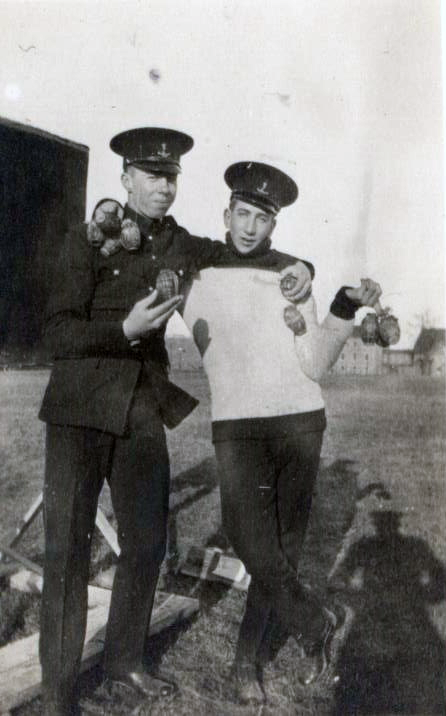
1917
Nursing Sister Anna Augusta Wright, a veteran of the Great War, arrives at RMC. She is the first women to join the senior staff at the College. She is the first of several nursing sisters who will reside in the Old Hospital until it is closed in 1942.
1918
After the Halifax Explosion in December 1917, the Royal Naval College of Canada relocates to RMC from February to June 1918.
1919-1925
Major-General Sir Archibald Cameron Macdonnell is appointed commandant. Having entered RMC in 1883, his service included time with the North West Mounted Police, service in the South African War, and during the Great War, command of an infantry brigade and the 1st Canadian Infantry Division. As Commandant, Macdonell oversees the completion of the Currie Building, the presentation of a Stand of Colours to RMC, the establishment of the RMC-West Point Hockey games, and myriad customs and traditions. The remains of his horse Casey are buried near the Commandant’s Residence.
1919
The Prince of Wales visits RMC and presents the College’s first stand of Colours which remained in use until laid up in 1942.
His Royal Highness, Edward, the Prince of Wales, presents the first King’s Colour and Regimental Colour to RMC. The original Stand of Colours presented to the College were late laid up in Saint George’s Cathedral in Kingston.
1921-1922
Commandant, Major-General Sir A.C. Macdonell, KCB, CMG, DSO, LLD establishes the Memorial Staircase which features photographs of cadets whose names were inscribed on the College Roll of Honour. The three stained glass windows between the first and second floors are memorials dedicated to three cadets who drowned in 1903 and 1913.
1921
The central tower and west wing of the Currie Building, named after Lieutenant-General Sir Arthur Currie, the commander of the Canadian Corps 1917 to 1919, are completed.
1922
The Sir Arthur Currie Memorial Hall is formally opened, and is dedicated to the Canadian Corps, formed in 1915, that earned Canada considerable accolades during the first World War. The decoration of the space outside of the Hall remained incomplete until the early 2000s, when through the sponsorship of several classes, the work was completed. A ceremony marking the completion of this and restoration of the Hall itself was held in 2023.
1923
The RMC - USMA hockey series begins. Although halted briefly during the Second World War and due to the Global Pandemic, the series continues to this day as one of the oldest international ice hockey matched in the world.
The USMA team comes to RMC the following year.
1924
The Memorial Arch is unveiled. It was built using funds raised by former cadets and was dedicated to the memory of cadets who died while serving in the First World War and earlier conflicts. After the Second World War, plinths were added on either side of the Arch with the names of former cadets who died during that war. Names of former cadets who died in subsequent conflicts or training accidents continue to be added.
1935
1939
King George VI and Queen Elizabeth visit RMC in May. This is the first visit by a reigning monarch.
1939
The Second World War begins in September. The cadet program is shortened. Cadets in their fourth year are commissioned in October and sent overseas. Cadets in their third year are commissioned in December and follow their seniors. New cadet classes arrive in 1940 and 1941.
1942
The Royal Military College of Canada was closed as a Cadet College in June 1942 and reopened in September 1948.
The final cadet class is commissioned for war service and RMC now devotes its attention to running war and staff courses. The Colours are laid up and the facilities are now used for staff training and other courses. Members of the Canadian Women’s Army Corps are stationed at RMC to provide support to the training activities and will remain on campus until the conclusion of the war.
During the Second World War, RMC graduates serve in the Royal Canadian Navy, Canadian Army, and the Royal Canadian Air Force at home and in all theatres abroad. Others service with the British and Indian services.
1948
Following debate on the future of RMC, the College returns to its primary mission with the arrival of the ‘New Hundred,’ the first cadet class since the early 1940s. Plans to enhance the facilities and program at RMC begin that will eventually lead to the College gaining degree-granting status. The Canadian Military Colleges is also formed to oversee Royal Roads, a feeder school that in 1969 will receive college status, and Collège militaire royal de Saint-Jean in Quebec, which opened in 1952.
1950
Fort Haldimand dormitory is completed and named after General Sir Frederick Haldimand (1718 – 1791), Governor of Québec, 1778 to 1786.
1950-1953
Forty-seven former cadets served during the Korean War. Twenty-four members of the New Hundred received their commissions and deployed to Korea with the Canadian Army.
1952
The Regular Officer Training Plan introduced subsidized education that attracted a wider socio-economic group of recruits. All graduates would now join the regular components of the three Canadian services, less those in RETP. The rapid expansion of the services to meet UN and NATO demands had increased the demand for junior officers.
1952
Opening of a third military college in Saint-Jean-sur-Richelieu. Like the officer cadets at Royal Roads, those at Saint-Jean are transferred to RMC for their final two years.
1956
Motor Vessel Cordite was designed and constructed by Mechanical Engineering Staff as the first all-welded aluminum vessel built in Canada with material donated by Alcan. The keel was laid in 1954 and the completed vessel launched in October 1956. This was but one vessel in the ‘Mech Eng Navy,’ which also included a submersible built in 1952, and a hydrofoil name ‘Top Sea’ in 1960.
1959
The Province of Ontario awards degree granting status to RMC. Celebrated Canadian historian, Desmond Morton received the first RMC degree.
The passage of the RMC Act grants RMC with degree-granting status. RMC hosts its first convocation in May 1959, and its first Bachelor of Science (Honours) and engineering degrees in 1962.
1960
The Constantine Arena, Massey Building and the Senior Staff Mess opens.
1965
Fort Champlain dormitory is opened and named for Samuel de Champlain, first European visitor to the area in 1615. Fort Haldimand originally had a pool in the lower level that was later removed.
1968
The Official Languages Act is passed leading the RMC becoming a bilingual institution. RMC formed a Bilingualism Committee to determine the use of both official languages.
1973
The first group of candidates for the University Training Plan Men (UTPM) arrive at RMC and RRMC. By the end of the decade, women are permitted to join what was first known as UTPM (Women); eventually both are combined and renamed as the University Training Plan Non-Commissioned Member (UTPNCM).
1974
Sir Archibald Macdonell Centre (now the Kingston Military Community Sports Centre) opens.
1975-1976
A two-stage programme is introduced to offer as many third year courses as possible in French, phase two would expand that to fourth year courses.
1976
RMC celebrates its centenary that is marked with numerous events, including the exercising of the Freedom of the City of Kingston and Pittsburgh Township, the laying up of the Old College Colour, the presentation of a new College Colour on Parliament Hill in Ottawa, a special centennial tattoo and other activities.
1976
The reigning Monarch and other members of the Royal Family have visited RMC.
Her Majesty Queen Elizabeth II inspecting a quarter guard on the occasion of RMC’s centenary.
1976
The cadet statue, officially named "Truth, Duty, Valour" but called "Brucie" by the cadets is unveiled and moved to its present location in 2023.
1977
Girouard and Sawyer Building are completed. These modern building were designed to complement the existing architecture of RMC and provided new facilities for a language centre, laboratories, classrooms and departmental offices. During the early 2000s both buildings underwent extensive modernization renovations.
1980
Overcoming strong opposition from several groups, women are permitted to attend RMC and the other two military colleges. The arrival of the first 32 women cadets, know known as the ‘First Thirty-Two,’ are distributed between the eight squadrons. Over the next few years, the career opportunities for these and other women expand as the number of women staff and faculty at RMC also increase.
Twenty one of them graduated in 1984.
1995
The Government of Canada announces the closure of Royal Roads Military College and Collège militaire royal de Saint-Jean, leaving RMC as the sole military college in the Canadian Forces.
2001
Fort Sauvé Dormitory opens, named after Jeanne Sauvé, Governor General of Canada, 1984 to 1990.
2001-2014
The Afghanistan War. The number of former cadets that serve is unknown, but several are injured and four lost their lives including Nichola Goddard, Matthew Dawe, Kenneth O’Quinn and Michelle Mendes.
2007
The Leonard Birchall Pavilion, named after Air Commodore Leonard Birchall (Commandant 1963 to 1967) is opened as a facility for people using the sports fields along Navy Bay. Birchall, a flight commander in 413 Squadron that was based in Ceylon (now Sri Lanka), during a patrol on April 1942, warned of a large Japanese fleet as it steamed towards Ceylon, before his Catalina flying boat was shot down and two members of the crew were lost. Captured, along with the surviving crew members, by the Japanese, Birchall demonstrated resolute leadership while a prisoner of war. It was British Prime Minister Winston Churchill who gave Birchall the sobriquet of ‘the Saviour of Ceylon.’
2008
The Aboriginal Leadership Opportunity Year is established as a one-year long educational, training, and cultural programme at RMC. It is later renamed as the Indigenous Leadership Opportunity Year.
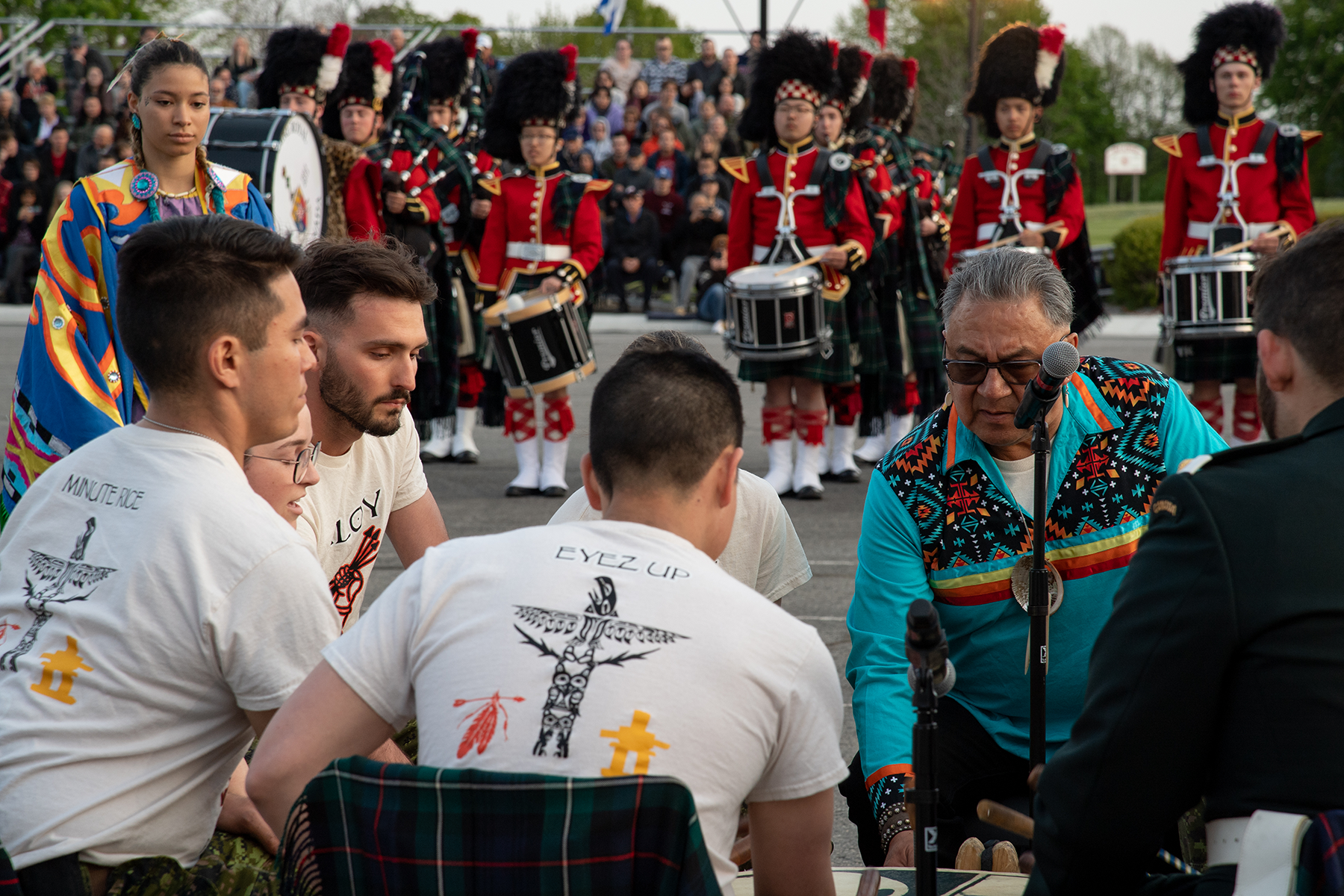
2008
2008
Fort Brant Dormitory opens. It is named after Molly and Joseph Brant, who were members of the Mohawk Nation and were key to the Loyalist defence during the American War of Independence.
2010
RMC begins its Artist in Residence programme, with noted local author Stephen Heighton as its first artist in residence. The programme has since seen playwrights, musicians, a photograph and other artists participate in the programme that enriches the experience of the naval and officer cadets and staff.
2014
As RMC evolves to the changing demographic, the turban standard was developed and implemented in 2014, colour-coordinated with the headdress and a ribbon that matched the colour of the piping on headdress.
2018
AGORA, the RMC 2SLGBTQIA+ social, support and advocacy group is formed. The group hosts talking circles and other events at the College throughout the academic year.
2019
The Athena Network was established to support students, foster discussion on gender roles at RMC and in the CAF, and provide opportunities for individuals of different generations and genders to connect and inspire each other.
2020
Due to the global pandemic, RMC ceases operations on site and conducts classes and training by distance, using electronic formats. All cadets return to campus in March 2022.
2021-2023
The first woman to be Commandant of RMC, Commodore Josée Kurtz (2021 to 2023) addressing the audience during the Spring Convocation of the Class of 2022.
2022
A statue of a woman cadet is unveiled. Donated by the Class of 1981 and the Class of 1984 as an early gift for the sesquicentennial of the College. A committee of members from the Cadet Wing chose to name the statue ‘Nikki,’ in honour of Captain Nichola Goddard from the Class of 2002, who was killed on May 16, 2006 during a firefight in Afghanistan.
2022
Dr. Cécile Malardier-Jugroot was first woman Acting and Interim Principal from July 2022 to December 2022.
2023
The RMC Defence Racialized Persons Advisory Group is a cadet-led group formed to represent the cultural, faith and diverse needs of the RMC community and to advise senior College leadership on these matters.
2025
RMC prepares to mark 150 years of contribution to Canada with various on-campus events and communication products.
